LampizatOr Poseidon — A God with a Human Soul
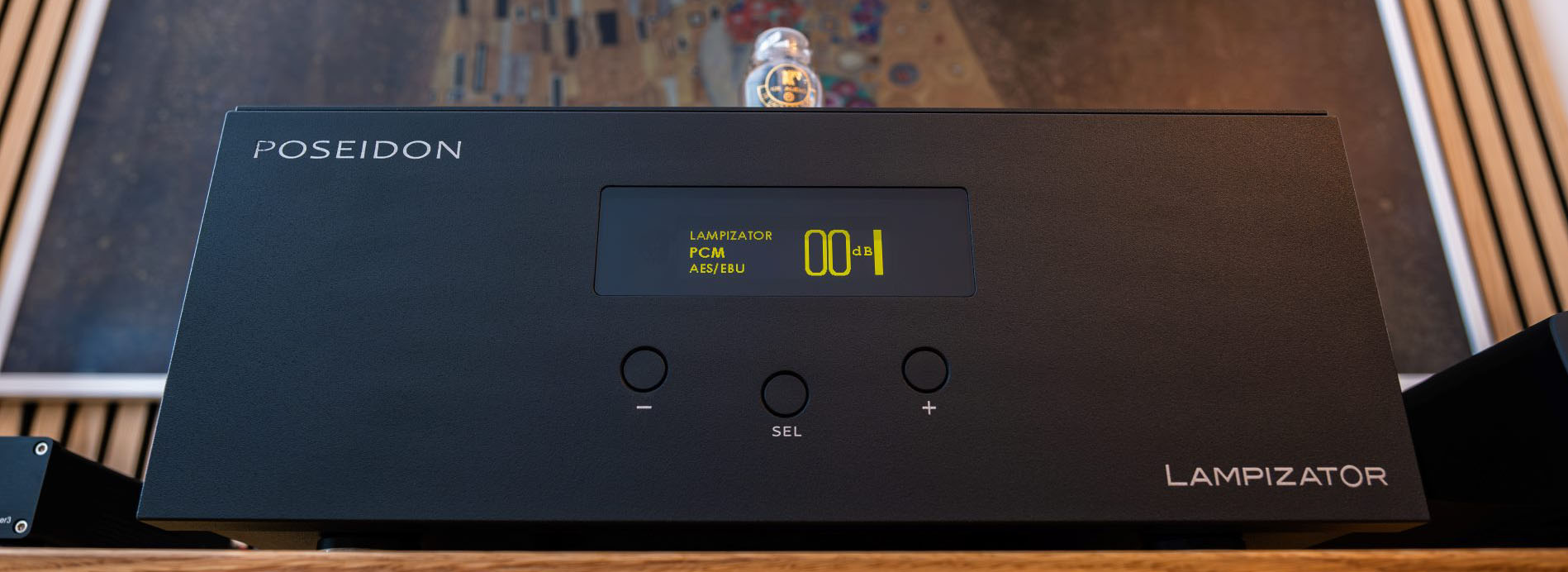
— One —
Disclaimer.
How does one write about true Gods? Is it by kneeling, acknowledging, and witnessing their supremacy and inhuman powers? Is it by glorifying their impressive stature and otherworldly beauty, or delving deep into their souls? Most of these divine beings reveal a soulless, ruthless essence, motivated solely by their boundless, inhuman abilities. Should we acknowledge their emptiness or lack of humanity, or should we submit unquestioningly to their supreme power?
How do you write about gods without falling into pitiful adoration or, even worse, slipping into a fear of the unquestionable unknown? Dig deep into their essence and testify to the inner light and intimate source of their infinite power. Discover the true, intimate mechanism that moves them and search for the real soul, if one can be found?
These are tough questions, and some answers will be provided upfront. It is not difficult to recognize the adoration inspired by these inhuman, magnificent creatures, nor the uncertainty of having an objective view in the face of such tremendous powers. It is better to acknowledge the cult’s powerful attraction and significant influence. It is only human to recognize the slippery slope of such a mission, the risk of becoming subjective, and even more. Whatever, strict and utterly unbinding one can be, there are moments of weakness in the face of such a fabulous presence.
That is why I must confess and warn the reader in a moment of reflection and at the beginning of such a demanding task. It can not be a perfectly objective review of such a majestic piece of gear, named after one of the greatest gods known to man. I will try to keep the balance and the voice in control, but there is no guarantee in the end, as this tremendous DAC/Preamplifier checks so many boxes and brings so much heavenly joy. I am only a human, and the power of this god is sometimes above all imaginable.
But I will always seek the truth, and I will question things as much as I can from my mortal, time-defining perspective. This is all I can promise.
— Two —
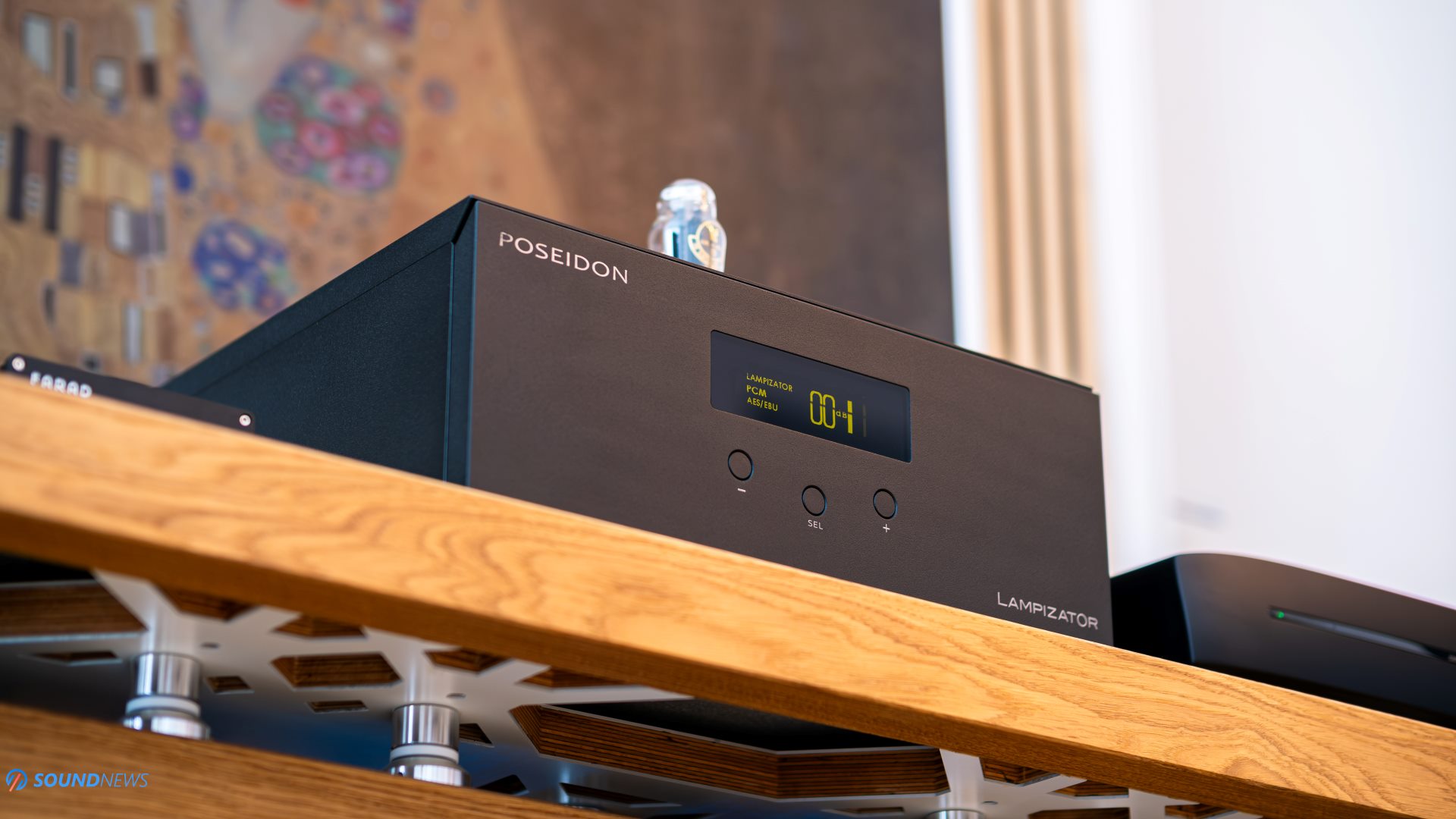
I am grateful!
This is a long-overdue review; I’ve been listening to LampizatOr Poseidon for more than six months already. I am genuinely grateful, and I want to thank the great guys from Eaudio (eaudio.ro) who made it possible. Truly passionate and genuine audiophile enthusiasts, Răzvan and Sorin, made all this a reality by serving as the official representatives of LampizatOr in Romania. I am grateful to be able to name them friends now, bound by a passion for excellence in sound quality and more. This is one of the most rewarding aspects of this journey for me: meeting great people who, sometimes, somehow become trustworthy friends. This is very precious as it is rare.
My Poseidon was the first of its kind to reach Romania, and the kind folks at Eaudio lent it to me for a review. I had long dreamt of this moment, almost a year in the making, before everything finally fell into place. This experience felt like a journey in many respects, and I am now the proud and deeply grateful owner of the very first LampizatOr Poseidon to grace Romanian soil. What a chance!
It felt like a dream for me! Once I experienced the LampizatOr Poseidon, I knew there was no turning back. Everything I tried afterward couldn’t compare, and I began to realize it was a bit of a fruitless effort. You might wonder about my objectivity in this review, and I totally understand that! I always aim to be fair, but it’s good to remember that everyone has different preferences. While I will do my best to focus on objective qualities, there might be moments when I lean into my personal feelings.
And you know what? I honestly love my Poseidon DAC!
— Three —

Poseidon – the God of the sea, storms, earthquakes, and horses.
The second day of the 2023 Warsaw Audio Video Show was a brittle November morning with misty and windy weather. My friend and partner Sandu, here at SoundNews, and I decided to head to the second location of the show, the Golden Tulip hotel, just a few hundred meters from the previous day’s venue. I had a goal in mind: this time, I needed to check the LampizatOr room. The Polish company had gained significant momentum in recent years; it was more than a brand – it resembled a cult to many audiophile enthusiasts. You can hear whispers of LampizatOr as a sacred mention of one of the hidden books of creation. It was a subject of great revelation on the forums, a secret known only by the trusted and faithful, a knowledge hard to comprehend, and some mystic treasure reserved for the highly initiated. It bears an aura of mystery and uniqueness, standing out from well-known brands, regardless of the listed price. This was something above all, a religion of itself, unscathed by worldly morals or common sins.
And you can understand why this admiration and respect for a boutique brand that not only challenged the “novelty” status quo constantly for so many years but chose to travel on its path, so narrow, so precise, a path very few dare to take. Łukasz Fikus started the LampizatOr company 15 years ago, but he already had deep and solid roots in the DIY community. You can still find some good old Łukasz’s schematics on forums that so many people used to build great DACs. Sure, it’s merely a starting point, but it succeeds in providing a great deal of satisfaction, knowing you’re on the right path.
Today, LampizatOr is a unique, well-established business with an impressive portfolio. The basic principles, the dogma ingrained in the inner fabric of the brand, continue to preserve the status of a Giant among mortals. LampizatOr is not afraid to say it loud and clear, to write on its website, and to talk openly about the misleading upper hand of the new technology strongly proposed by others:
“We design the products the good old way – with large transformers, with multiple power supplies, with large chassis, with a lot of point-to-point connections made with silver wires in teflon. We use hundreds of very good and over-specified components from the best-known vendors and brands, and we choose them by ear first. We carry enormous R&D efforts every day, every week, and every weekend, too, in order to outperform ourselves and competitors. Every one of our products has to undergo rigorous audiophile testing marathons.”
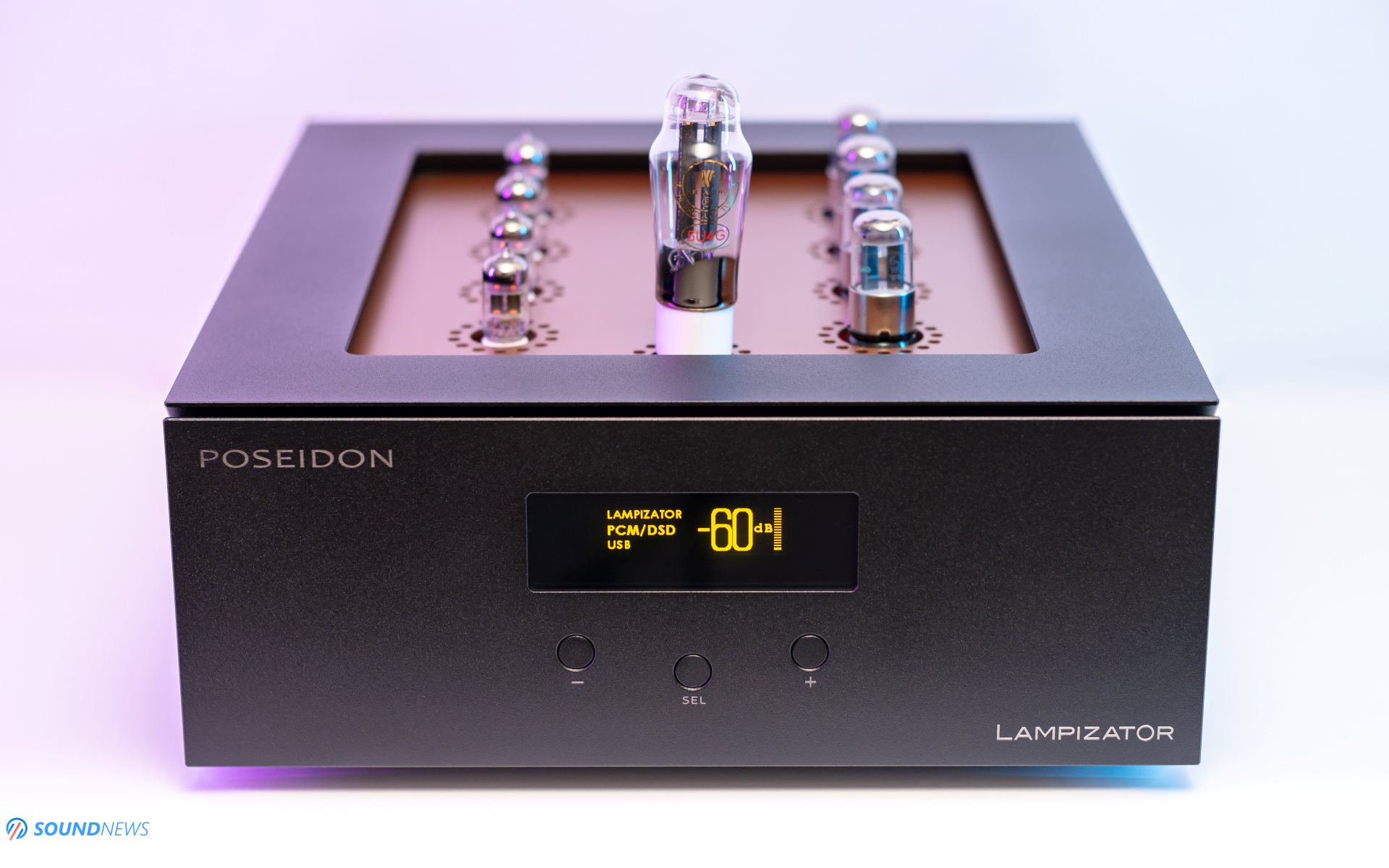
The venerable mantra of direct-heated tubes remains effective, even 70 years after the pinnacle of this technology. Despite the remarkable discoveries of recent years, they have had little impact on the spectacular ultra-high-end of audio reproduction. And when everyone embarked on the newest and shiniest semiconductor innovations, many jumped on the OP-amps or transistors, chasing the promised land of miniaturization and software gimmick corrections, LampizatOr had the tremendous guts to stay on the traditional path of direct heated triodes with enormous pure copper or silver transformers, daring to conduct thousands of listening tests in a time-histerya era, with massive costs involved merely to perfect and distill the technology that sounded best, to its essence. This is something to be heard!
When everyone rushes to slap off the faceplate of their old product for a new one, upgrade a few components, or double some boards while doubling the price, LampizatOr has an almost incredible goal for this rush to the dementia era that we live in:
“We want to create hi-fi products that stay in your home. Yes, it is that simple. When you try them, you KNOW you want them, and then they will stand the test of time. These are not gadgets that get sold after 6 months to make room for another gadget. Our products aspire to be SO MUSICALLY INVOLVING that you simply can’t find anything better.”
This can not be a marketing tactic and is not even a polished, well-written statement. It comes from the heart, from a deep conviction, from passion, and from the fundamental principles of doing things. There will not be any software updates every few weeks. There will not be any software update, because they have listened for thousands of hours, they know exactly how they want it to sound, and there is no extra gimmicky display menu or phone app to correct for bugs along the way. Nope. There will not be a new product version, such as a Statement, MK7, or Reference edition, for years to come. None. The user will not have to sell the product, losing a significant amount of hard-earned money to get the new, updated one. No way. There is a clear upgrade path for the new level elevated products or jumping up the line to higher ones, and it is just beyond comprehension in our greedy world:
“Every product we build carries a serial number and is unique because we build it for you. It is like no other because we first listen to your requirements and we build a machine that will suit you best now and in the long run. Every component is documented in our manufacturing logbook for future reference, servicing, and upgrading. Every component carries a five-year unconditional and transferrable warranty. We honor the warranty on every second-hand product you buy. Every product can be upgraded in the future to any specs or level you desire. Any forgotten feature can be added later. After a product comes to our factory for repair or upgrade, we can negotiate “resetting” the warranty to a new 3 years. After a thorough factory overhaul, our previously owned products get a new life with a new serial number, new log-book entry, and new warranty.”
This seems unreal. So, one can use and enjoy the product for years, paying only for upgrades? Yup. They proved it with the Pacific line, and even with the cost-no-object Horizon, recently upgraded to the 360 version. A generous timeframe was available for the existing users to listen to the new versions and decide if they wanted to go on the upgrade path. It was even a question of taste and personal experience, as the existing products were so well established in the people’s systems that the jump seemed unnecessary to some. Mind blowing!
— Four —
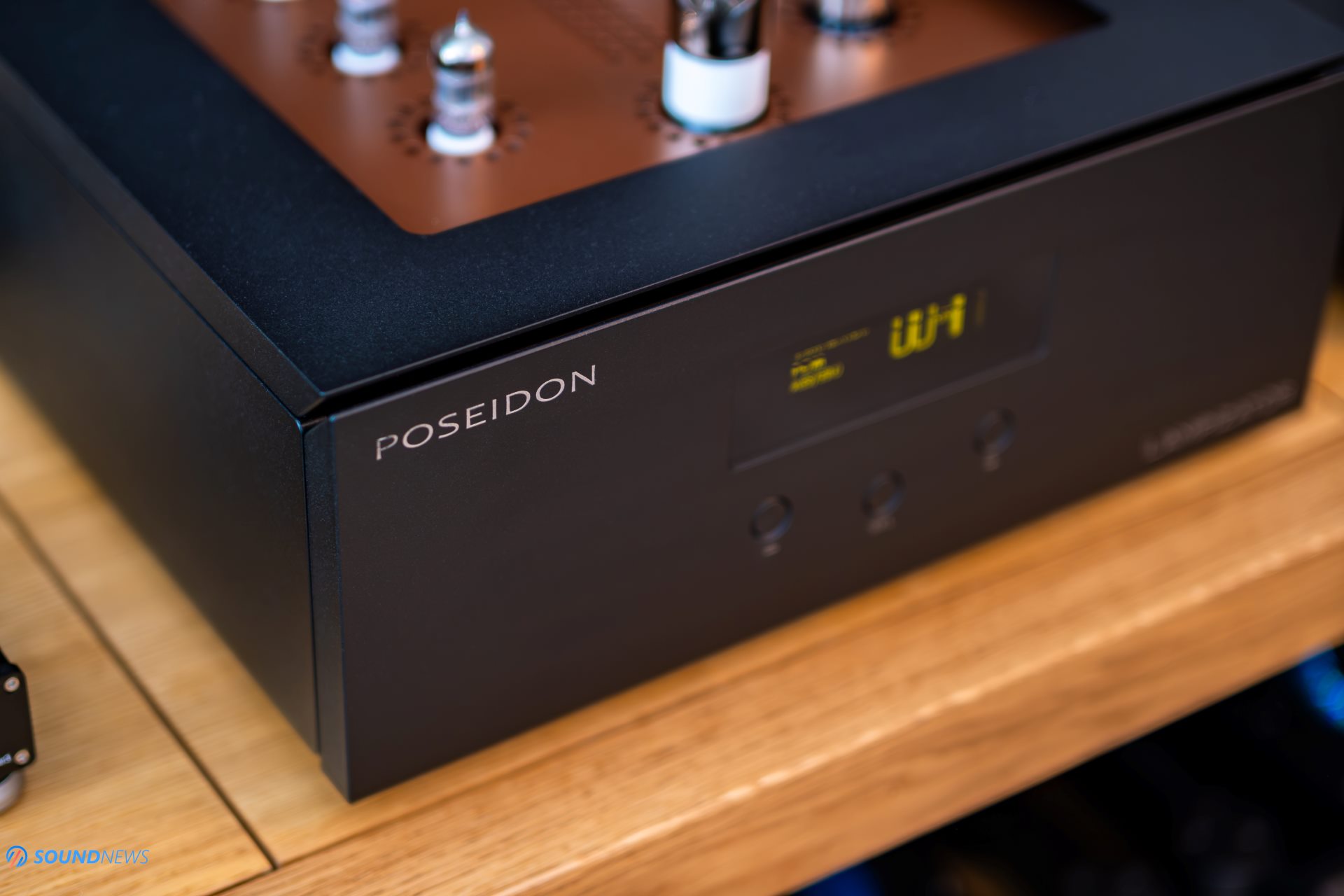
The “Earth Shaker”.
I had been aware of all of these for some time before setting a goal to listen to a LampizatOr product. I was so lucky to have the chance to hear the new Poseidon DAC for the first time in its public launch audition. I spent years searching their website and reading the forums, trying to comprehend the mysterious aura surrounding these LampizatOr creations. For the first time, a true God was making a public appearance in a new form factor, with a new visual design language, a new approach for the tubes used, and a far more sought-after product beyond the pure sound quality. A new era started with Poseidon, a more mature and elevated creation, at the level of a godly name. This was a major “earth-shaker” appearance, one that would come to rule the future.
Lukasz’s setup was also brilliantly assembled – at the heart of the system, Poseidon served as the DAC and also as a line preamplifier. A state-of-the-art J. Sikora turntable was alternated with its digital counterpart, the LampizatOr Gulfstream supercomputer, all connected with top-of-the-line KBL Sound. Here comes the genius part – the speakers were active bookshelves – yes, you got it right, the Sveda NEON active bookshelf speakers kept pace so well with the LampizatOr, allowing the new Poseidon to take the lead. And then some crazy wizardry happened…
— Five —
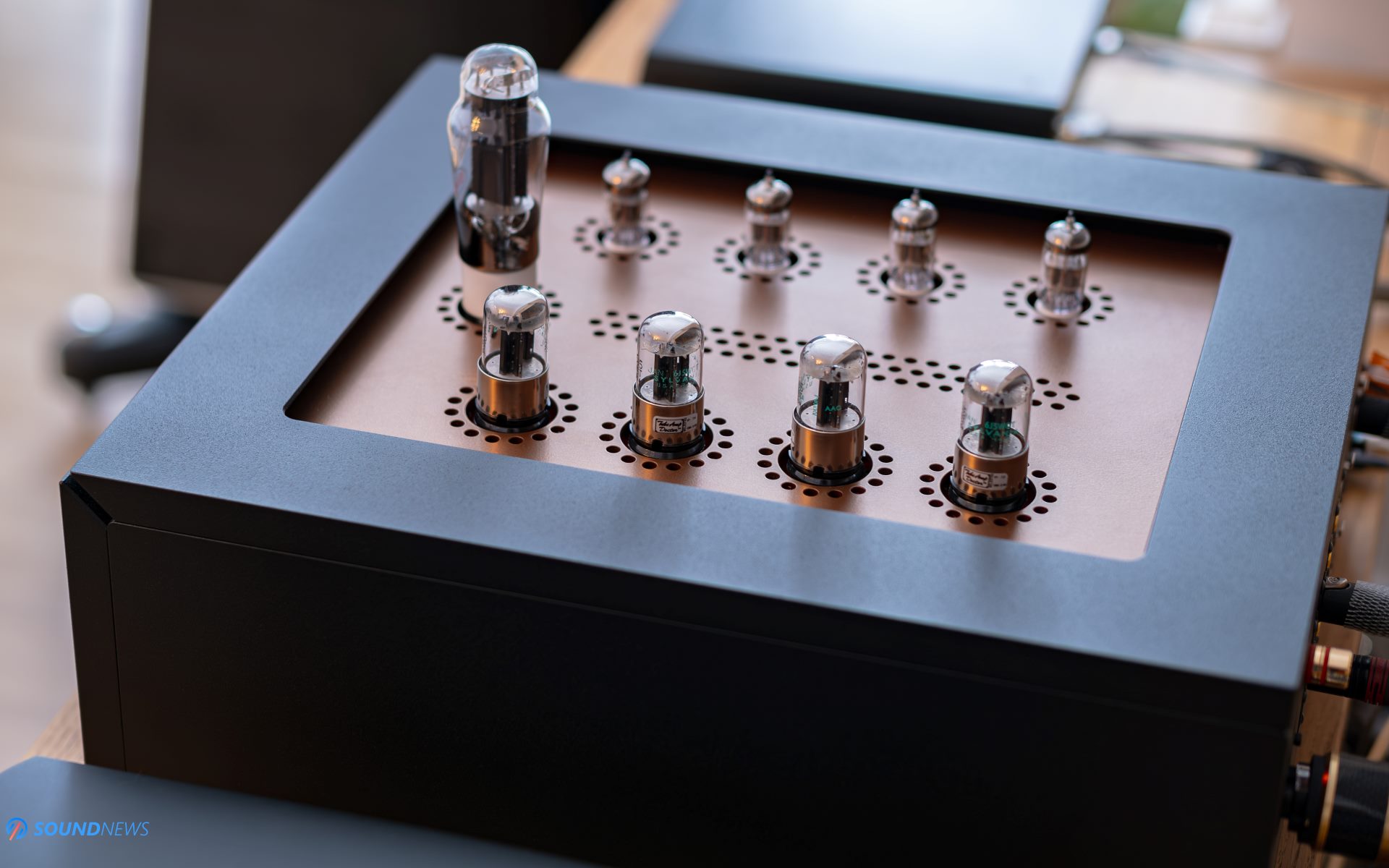
We don’t want to listen to distortion… Really?
I have heard this several times from fellow audiophiles who have strong opinions on the technology trend, which is fine as long as we do not ignore the reality of what we hear or try to dismiss it, only for the sole purpose of not falling in line with our beliefs. Focusing only on the measurable distortion is a mistake, as it has been proven time and again that it cannot present the whole picture. We can see the data provided by LampizatOr as 0.09% (single-ended) and 0.02% (balanced) at the industry-standard 2V output. Is that relevant in the grand scheme of a complete system? Hardly… However, a fundamental understanding of distortion remains applicable here, illustrating why 0.000002 is not necessarily superior to 0.02 in terms of sound quality. Reading the spec sheets’ data on distortion cannot provide any insight into how a product will sound. I am very sorry, but there are no details in that about how musically enjoyable and elevated a product is.
Details like: no silicon in signal path past the conversion stage, silver wiring, copper foil, and true metal sheet capacitors, zero negative feedback, zero opamps (ouch!), and tube rectified power supply, are far more relevant than any impressive measurement data. Tons of DACs measure perfectly, but sound like crap. Well, ok, maybe not exactly crap but how would you call a lifeless, sterile, overly stringent detailed representation of a musical creation executed by flowed humans on hand made wood and metalic instruments that shows no organic element in the reproduction as if it was plyed by plasticky mechanical robots?
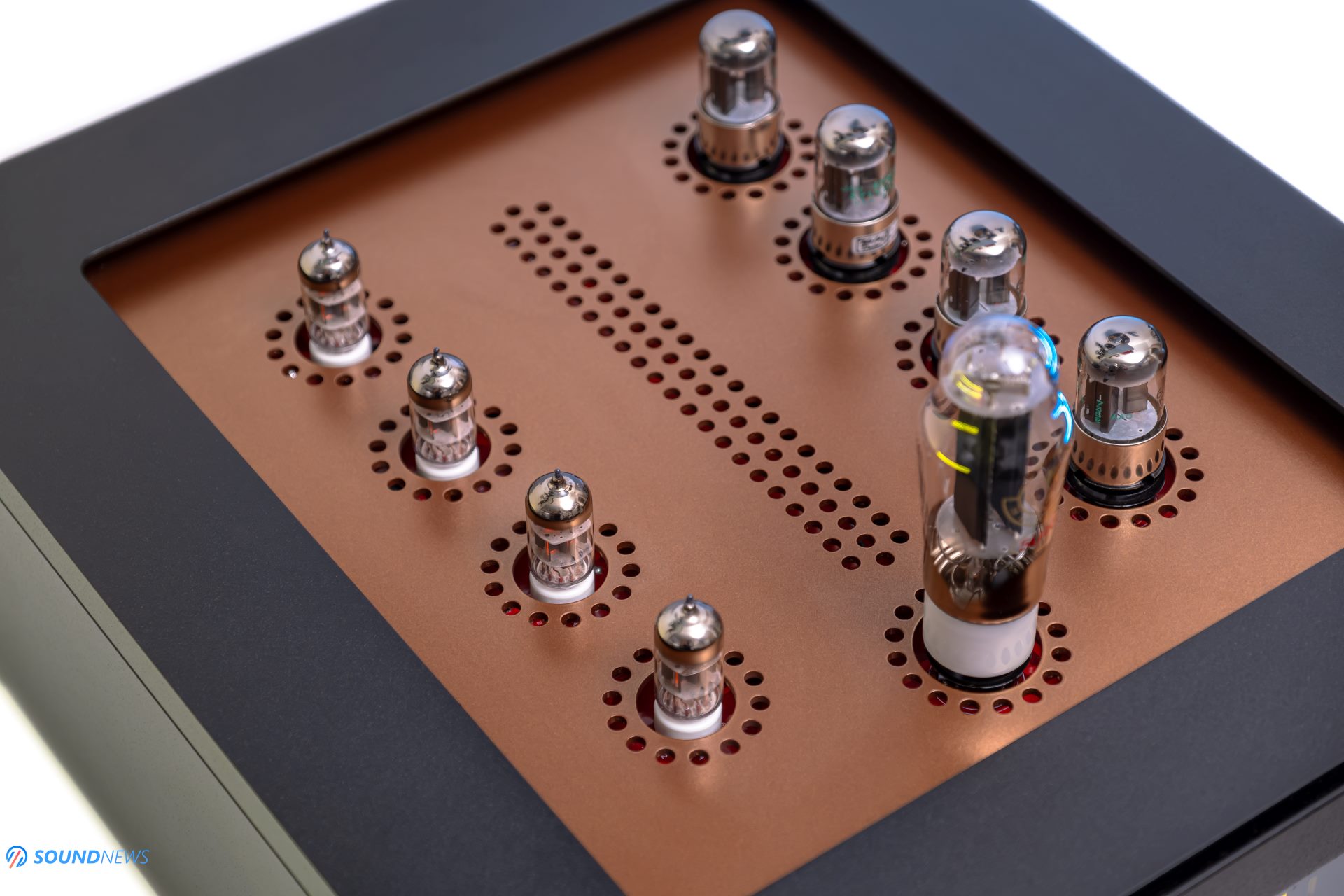
That is why I want to shine a little light here on this subject. And the reality is that the tube sounds more real and musically pleasing, even when they distort, compared to any solid-state alternative. And the explanation is straightforward – solid state gear produces odd order harmonic distortion when it starts to clip or distort. That will sound harsh and unnatural to the human ear. The upper harmonix doesn’t always complement the fundamental tone, and it can create a sense of sharpness or excess detail, sometimes a brittle character, dry, and often described as clinical.
Tubes, on the other hand, introduce even harmonic distortion; these harmonics are integer multiples of the original frequency, and they tend to blend more smoothly with the original note. That is why tube distortion is not even heard at times, and in the best equipment, it complements the musical reproduction without harming it. Instead of a harsh edge, you get a rounder, fuller presentation, instruments take on a natural bloom, vocal gains richness, and the whole presentation sounds more like music and less like a lab experiment. Distortion in solid state is seen as a flow, where distortion in tubes is often described as musicality. How can distortion be of audiophile quality? It is not just distortion; it is the way the human ear perceives sound. A completely neutral signal is not necessarily the most engaging. Consider how live music sounds: there is natural reverberation, a fullness that does not come from absolute clarity, but from the way tones interact in a space. Tubes, in a way, mimic that. The subtle enhancement of lower-order harmonics creates the illusion of depth and presence.
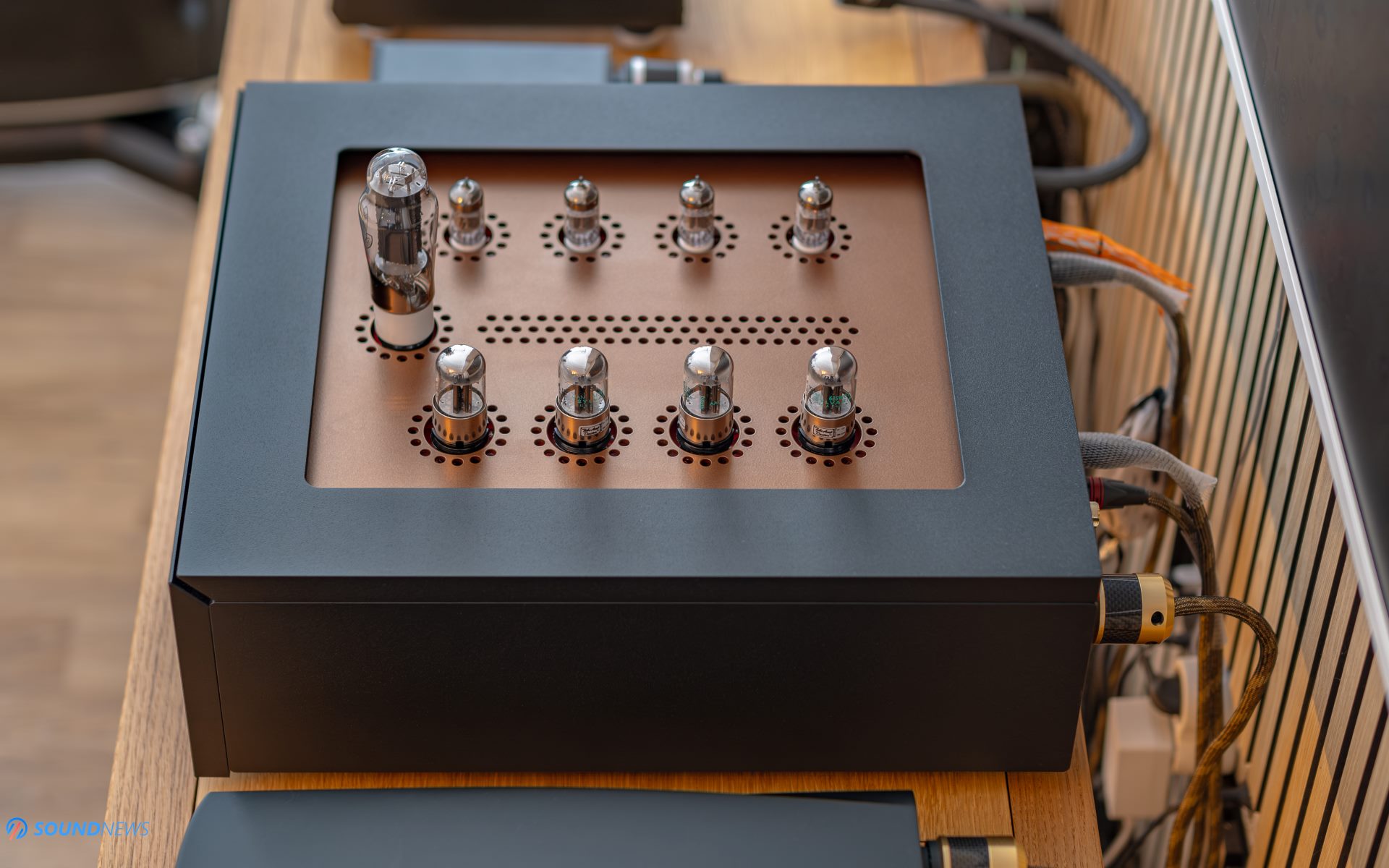
The sound stage and the holographic effect are key reasons for the popularity of tubes. Many believe that tube equipment creates a sound stage that is wider and deeper, allowing instruments to appear more distinct and three-dimensional. This belief primarily originates from the way tubes manage phase and harmonic structure within their circuits. They often produce second-level phase shifts, especially at high frequencies. While traditional frequency response graphs may not effectively capture this, the human brain excels at noticing these subtle shifts, which can give rise to a perception of a more open and airy sound.
Solid-state gear, especially fully differential balance designs, tends to exhibit much lower phase shift and tighter control over transients, resulting in sharper, pinpoint imaging; however, this can sometimes come at the cost of depth and organic realism. So, there is a trade-off, and sometimes it is so dramatic that it goes beyond a specific taste in reproduction; it becomes distasteful, even, and what many will call mechanical and artificial musical reproduction. That mechanically, overly clean, and lifeless representation, whatever impressive at first from a technical perspective, in the first minutes of listening, becomes very quickly an impossible mission for our brains to handle in the long run. It is too unnatural, artificial, and soulless to represent an engaging and pleasant musical reproduction.
Maybe this is why almost every serious system presented at every show I attended in recent years included some tubes in the signal chain—a tube DAC, a tube line preamplifier, a tube phono stage, or even better, all of that driving a marvelous tube amplifier. At least some of that magic tube “distortion” adds warmth and musicality to even the best solid-state amplification.
— Six —
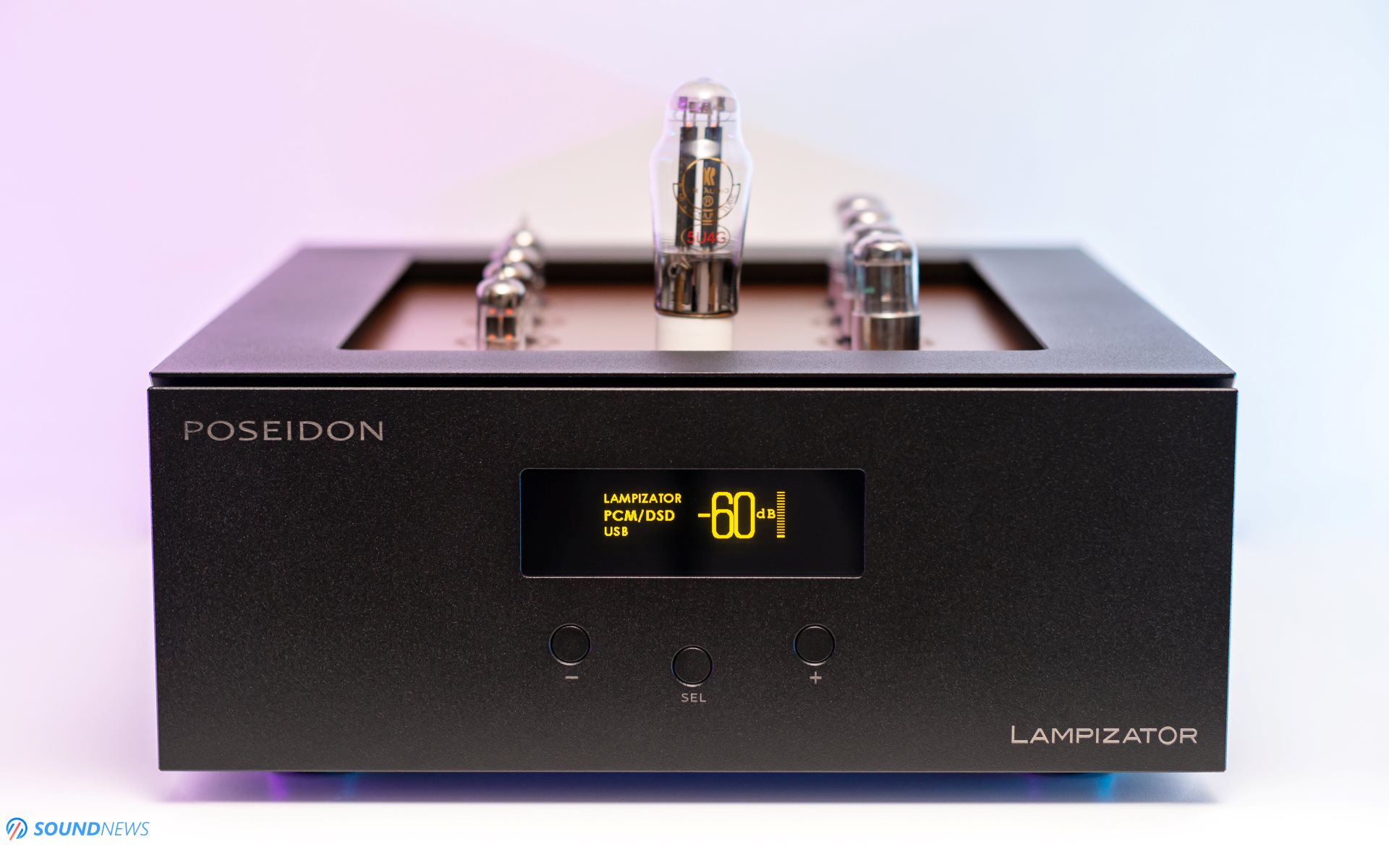
The Poseidon Project.
Poseidon claimed his right as the ruler of the middle portfolio waters and even beyond. With a clear objective in mind, the new product was born from the desire to offer the best of the top-of-the-line Horizon at a more affordable price point, without compromising sound quality and featuring a complete list of options that were previously considered additional. The design criteria were unambiguous: sound quality had to be the best, above everything else, below the Horizon; the volume control circuit had to be created with no sonic compromise; and the chassis had to remain manageable in dimensions, no larger than the Pacific or Horizon. Poseidon incorporates both single-ended and balanced technology simultaneously, featuring a superb line preamplifier with proper SE and balanced inputs, with the SE analog inputs effectively becoming balanced at the outputs. Other known drawbacks were also addressed with Poseidon: input impedance issues that typically plague preamps and output impedance weaknesses present in conventional tube products. And last but not least, the cost: Poseidon project shall impose half the price of the flagship Horizon, limiting itself to 23.000 Euro without taxes.
But, the most significant change from the Pacific direct heated triode configuration was to use another type of triode, more accessible and in current production, as the window for true new old stock (NOS) tubes becomes smaller and smaller. It is almost impossible for a manufacturer to control the quality and availability of the scarce, now, direct-heated triodes (DHT). And this new route was a turning point, even for the latest flagship Horizon 360 version that followed the Poseidon, which uses pentodes from current production and are available on a scale compared to exotic and extremely expensive triodes, such as the 300B, A23, and P45. Of course, the tube rolling opportunities are still tremendous, and if someone wants to try some exotic triodes, there is no technical drawback, but as I will explain later, there is little need for this. I discovered myself by going down this path too deeply and at too great a cost, so there is little need to jump into this rabbit hole. Łukasz did a tremendous job of testing hundreds of combinations, and what he is delivering with Poseidon is not just almost perfect but sustainable in the long run. The 6N1P/E88CC dual triodes for the input buffer and the 6J5/6V6 single triodes are currently in production, and the stock levels are sufficient for years to come.
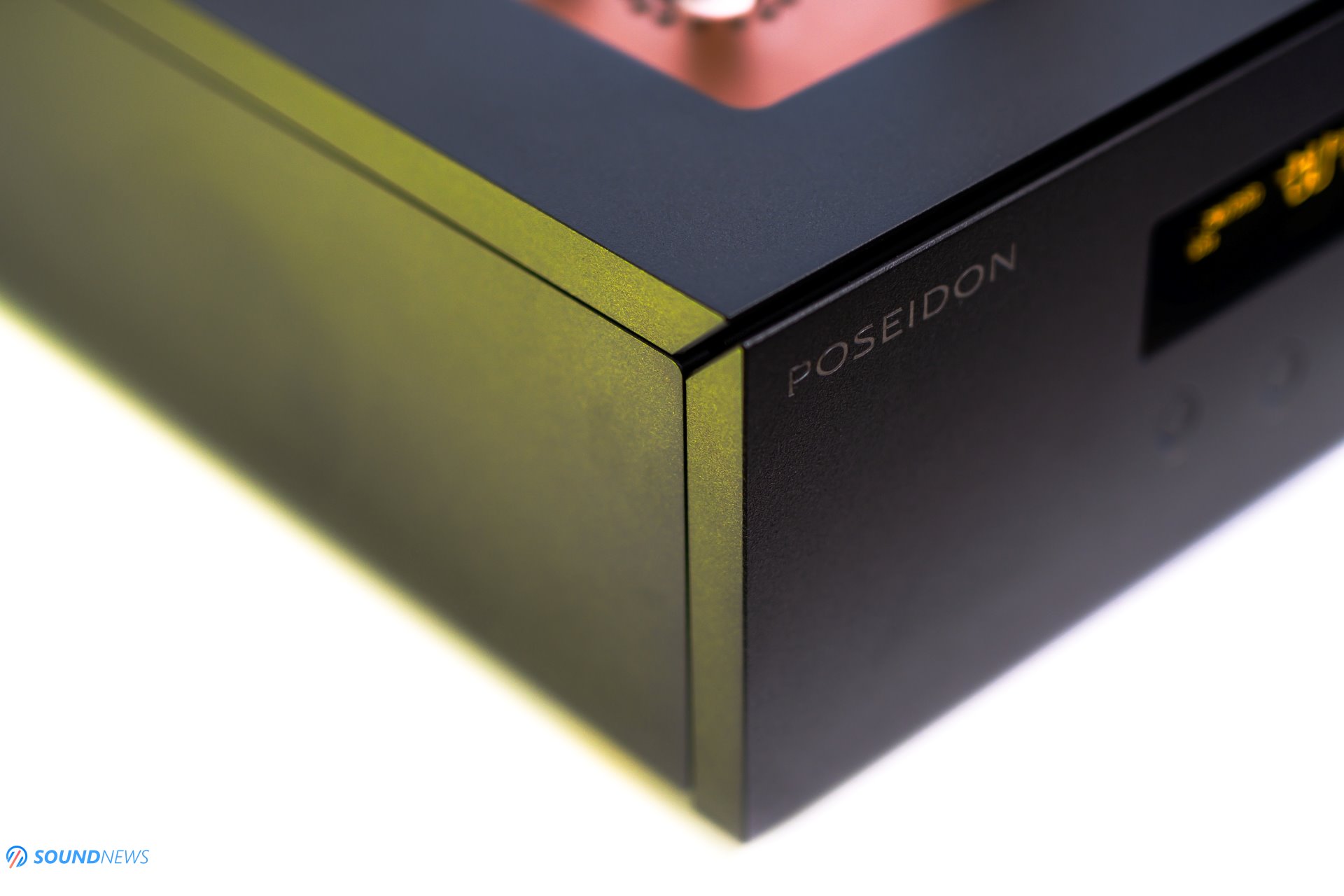
Poseidon is using the latest ELEVEN-P engine for the actual digital-to-analog conversion. And that engine is quite a mystery, as Łukasz did not want to reveal the real DAC on a chip behind it. What we know is that engine ELEVEN is not based on AKM or ESS as before; there is a new circuit where a great effort was spent on the software side to achieve the desired sound quality. There are also many requirements to accomplish this: a very elaborate power supply requiring six transformer windings, perfect signal and clock isolation and ground separation, proprietary software, zero relay design for the digital inputs, and a DC-coupled analog chip-to-tube interface. That is why the actual chip used is probably irrelevant information; all other staff count ten times more in the grand scheme of things.
A new OLED display now comes as standard, along with four identical mono circuits, with each phase featuring three tube stages: input buffer, amplifier, and output buffer. For the first time, the remote control is situated not before the tubes or after the tubes, but in between stages, making it the most transparent and benign volume control ever. In a new form factor (440 x 550 x 170 mm), weighing 23 kilos, Poseidon is available in black or silver with the “dust cover” top plate available in copper (the famous Duracell look), stainless steel chrome, or black matt (Black Hole).
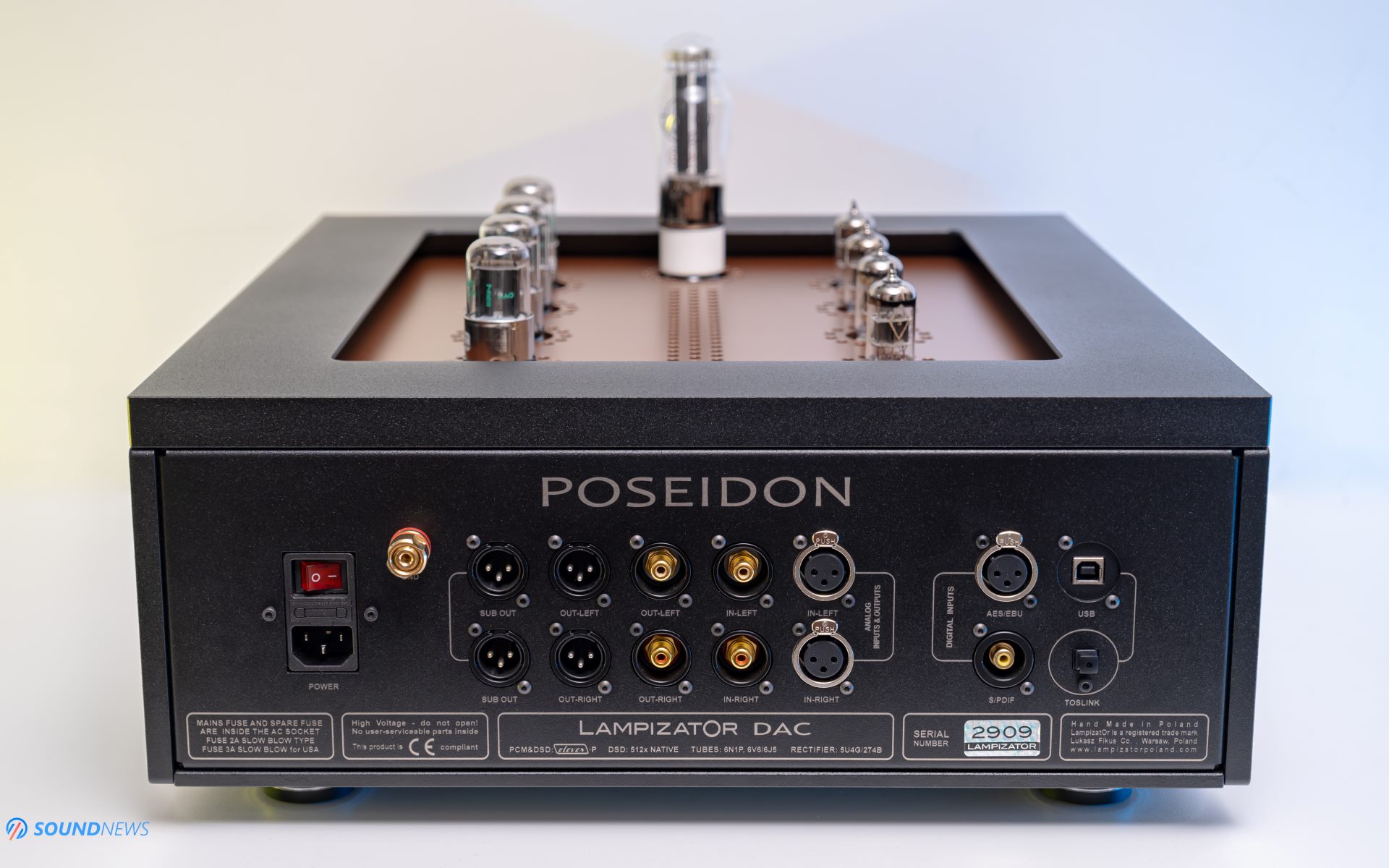
The installed digital inputs include 1 x USB, 1 x S/PDIF RCA, 1 x AES/EBU, and 1 x TOSLINK. As a high-quality line preamplifier, it features one analog RCA and one XLR fully balanced input. The output impedance is very low at just 400 Ohms, while the input impedance is reasonably high at 200 KOhms. Additionally, there are RCA SE and XLR balanced outputs. The maximum possible output amplitude is 11V SE and 22V Balanced, which is very high; the specs recommend attenuating the volume to achieve a standard 2V output for SE and 4.7V for balanced outputs. This hot output may pose a problem for preamplifiers using OP-amps that cannot handle this level of voltage swing. For this reason, it is much better to use the integrated preamplifier and connect the Poseidon directly to the power amplifiers. The LampizatOr team has gone to great lengths to provide one of the best preamplifiers available, regardless of the price point. This is very audible, with complete transparency and no dynamic loss, but more on that later.
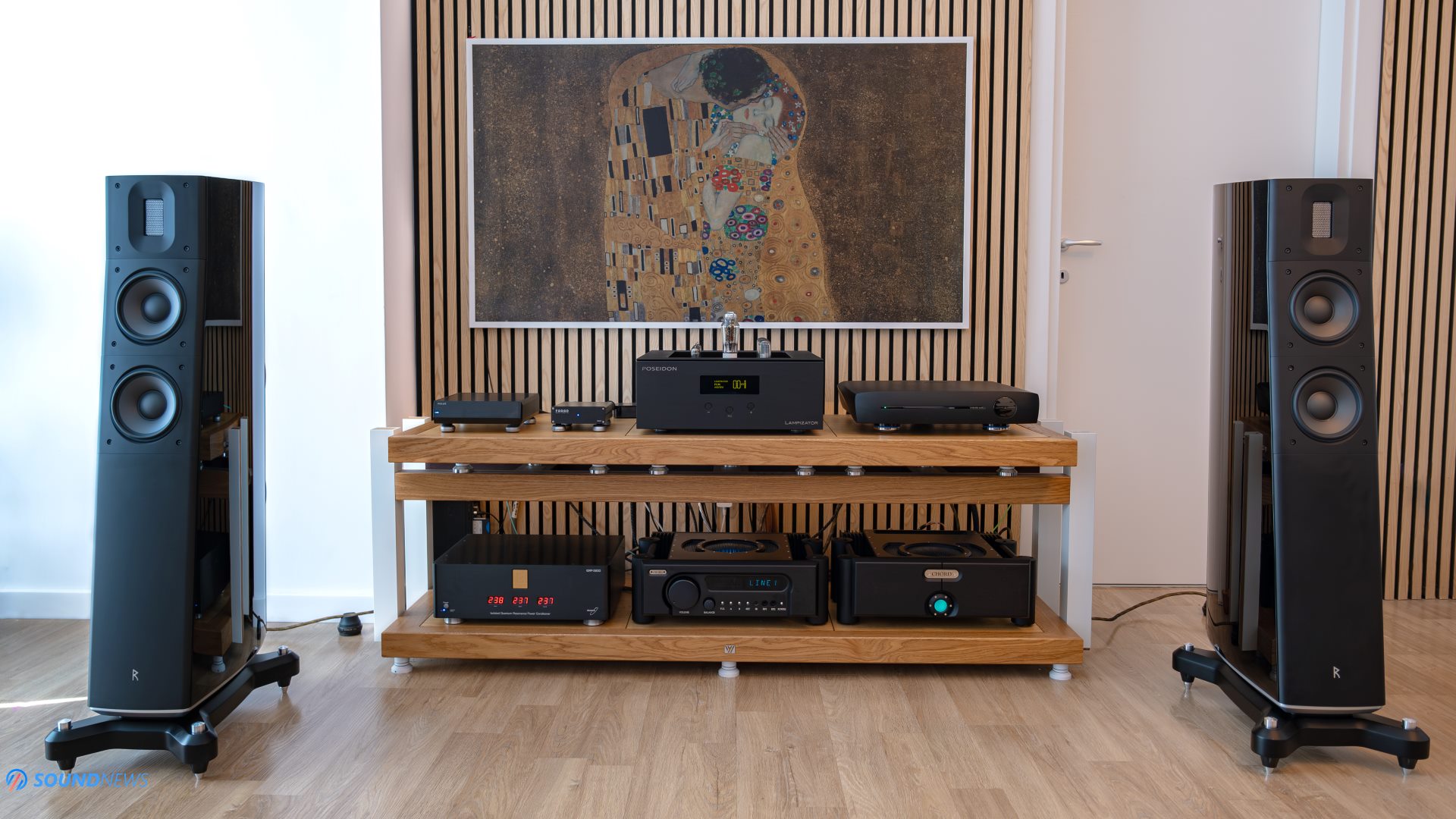
In a nutshell, LampizatOr Poseidon is a groundbreaking project, started from scratch but based on 15 years of experience, a highly developed proprietary DAC engine with complete tube-only input/output stages, extremely high-quality components, a cost-no-object tube rectified power supply based on multiple separated transformers, a pure signal path with no silicon out of the conversion stage, perhaps the best volume control on the market, zero feedback, and a fantastic integrated line preamplifier. It is a marvelous machine — big, heavy, and fully balanced. It is so much more than a digital-to-analog converter. It is a statement at a much more affordable price point than what is possible from the LampizatOr house. Available for the first time at the end of 2023, Poseidon opened a new road for the industrial design of future products, which was a markerboard for LampizatOr, followed by Pacific 3 and Horizon 360 designs. The minimalist aluminum of the new chassis imposes a visually strong personality with its industrial, robust look, carrying very little of the DIY vibe, but enough to remind us where it all started. Built like a tank, it is intriguing to see how the panels are put together, with visible gaps between them, as if they are floating in the air. It is a cleverly executed move, and it is undoubtedly a big step in the right direction.
— Seven —
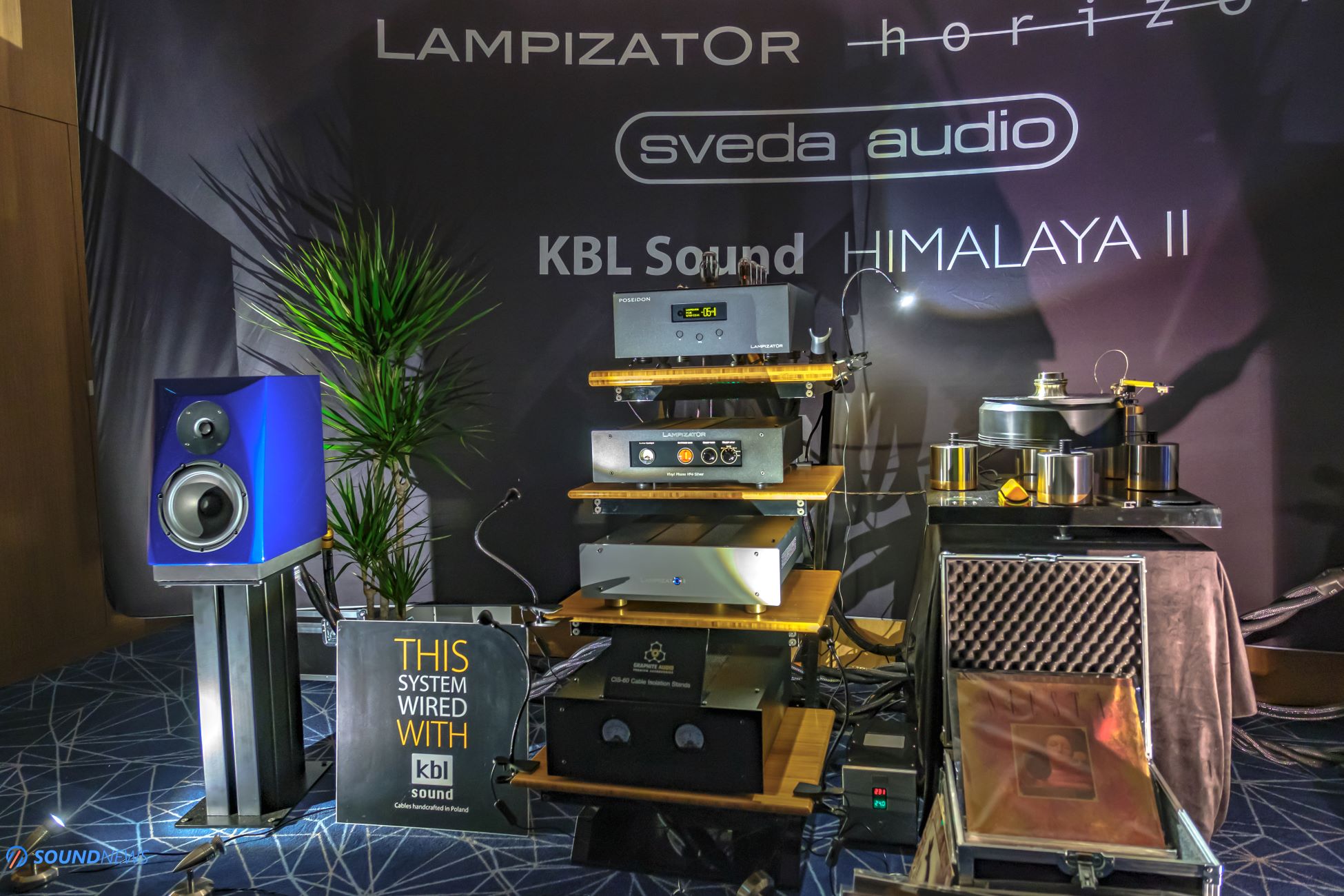
The Magic in plain sight.
Stepping into the LampizatOr room, we were lucky enough to get two central seats in the front row. A little pause allowed us to witness the setup of the impressive J. Sikora turntable with new vinyl, and the music started again. We were a little disappointed, as we had expected to hear the Poseidon DAC. However, we soon realized that Poseidon also acted as a preamp for the turntable. And it sounded really good. We quickly got caught up in the music and momentarily forgot about the source playing. The pure analog sound embraced us as a warm blanket, with so much vividness, and we stepped into a highly realistic soundstage. There was an eye-opening sound, full of emotion and naturalness, with incredible dynamics.
After two songs, the vinyl was back in its sleeve, and Łukasz took over the playlist. To our surprise, he started the last song we heard from the turntable, but this time in digital format using Poseidon as a DAC and preamplifier. We had already noted that no power amplifier was involved; we knew those speakers were active. It was a bold move to demo a new piece of gear on active bookshelves; however good they are, this comes with limitations in the end. To be honest, we were so impressed with the sound that we never felt any drawbacks. The dynamics were remarkable; it sounded big, muscular, highly revealing, precise, and organic, such that the bookshelves seemed irrelevant, as the sound could not have originated from there.
And here comes the magic and cleverness of it. Hearing the same piece in pure analog format from the turntable and seconds later through the Poseidon DAC in digital format was mind-blowing. All the naturalness and organic character of the analog was perfectly reproduced in the digital. Nothing less. Maybe some more dynamics and muscles. The same analog sound with crisp details, an airy atmosphere, in such a smooth and tangible, highly musical reproduction.

I moved my head to the left to meet my friend’s eyes. To no surprise, he was already staring at me with the same bewildered look. What in the world was happening there? The “Siesta / Kitt’s Kiss / Lost in Madrid, Pt. II (Album version)” from Music from Siesta – Miles Davis & Marcus Miller (1987, Warner Jazz) sounded so big, realistic, and full of color, with an immense soundstage and intensity, so close to the analog version and even more kick and immediacy. It was incomprehensible how digital could be so close to an artful analog reproduction. We were glued to our chairs for the next hour, unaware of the tension building around us as the room became fully packed with people, and a serious crowd waited outside for any chance to squeeze in. We lingered as much as we could, listening mesmerized to the highest engaging digital reproduction we have ever heard.
When we finally dragged our feet out of the room, avoiding the critical looks of the people waiting outside for some time, we made a few steps into the corridor. At the end of it, as if in a trance, we sat down on the floor against the wall. We needed to understand what just happened…
Truth be told, it was a unanimous understanding among almost everyone attending the LampizatOr room that Łukasz assembled the best system at the show. We heard time and again the confirmation that the LampizatOr room was truly the best. The place was full of sound, vivid and palpable, so engaging and organic — a rare experience, especially at shows. I was haunted for a long time by the sound of that room. Whatever I tried in my system, I was never close to that impeccable analog reproduction of a digital format. There was an inexplicable magic in the sound, a non-mechanical feeling with such bloom and completeness that it was irreproducible. For the first time, after more than a year, I am listening again to the Miles & Marcus soundtrack from that obscure movie soundtrack. Miller is creating an electrified but warm orchestra to accompany Davis‘ melodic solos, an exceptional piece of music. I am enjoying the colorful beauty, the richness, and the infinite soundstage with my Poseidon DAC. I knew deep down from that day, stepping out of the LampizatOr room, that it would be impossible to replace what is irreplaceable. It was a long and sometimes painful journey, marked by numerous trials and errors. I learned the hard way that true magic is precious because it is rare, and no wizardry can replace the might of a God’s blessing.
— Eight —
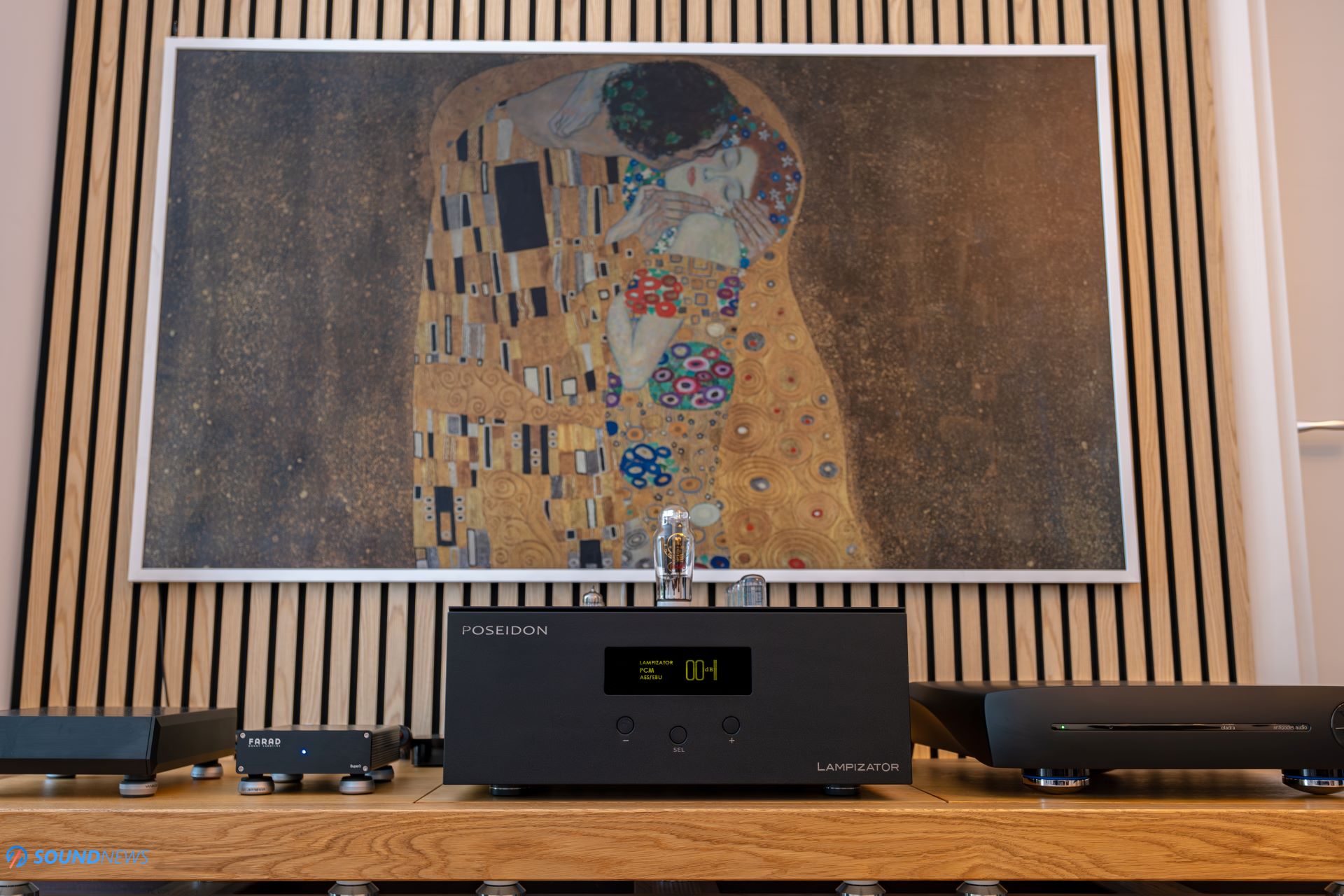
Loving my system unconditionally for the first time.
The Count meets the Duke – Duke Ellington and Count Basie (1961 – Columbia Legacy).
A battle of the bands? Not really — it’s more like a celebration of mutual admiration, with both jazz titans’ orchestras performing together. Ellington‘s sophistication and distinctive voicings blend seamlessly with Basie’s vibrant, blues-infused Kansas City swing, creating a magnificent sound. There’s no excess; each ensemble remains focused, producing a captivating harmony. This is not the introspective, contemplative side of Ellington (for that, listeners should explore Far East Suite or Black, Brown & Beige). The Duke and his orchestra highlight their lively dance band vibe, while Basie and his musicians showcase their most refined and exotic sound through Billy Strayhorn‘s arrangements. Everyone is feeling good, and this sense of joy resonates through the music from beginning to end.
I’ve been listening to a lot of jazz these days, and I’m enjoying it like never before. I am not there yet, and maybe I will never be able to decipher the hidden complex mathematics in the sound structure and rhythm of artful jazz at the highest level. Still, I am thrilled by the playfulness, the joy, the unexpected changes in structure, and the improvisation done in such an incredibly skillful way.
I am listening to Led Zeppelin with the thrill of a lifetime discovery — “Whole Lotta Love”, “What is and What Should Never Be”, or “Heartbreaker” sounds so incredible, coherent, and mind-blowing dimensional. I do not understand how they managed to mix in such a way at that time. I am listening to modern electric blues, hard rock, full orchestra performances, single violins, and voices —such fantastic human voices.

Macy Gray‘s ninth studio album, “Stripped”, recorded for Chesky’s Binaural+ series, was captured using a single microphone in a Brooklyn church. A quartet including trumpeter Wallace Roney, drummer Ari Hoenig, bassist Daryl Johns, and guitarist Russell Malone accompanies her. This approach feels natural for Gray, who began with jazz bands and has often cited jazz vocalists as her influences, infusing classics with her style. Alongside two original tracks and several covers, Gray revisits her previous works. “I Try” and “Slowly” are reinterpreted into soothing murmurs, while “Sweet Baby” gains a fresh rhythm. She also takes on Metallica‘s “Nothing Else Matters,” driven by John‘s bass, which alternates between a stutter and a graceful stride. Additionally, Bob Marley‘s “Redemption Song” receives a poignant lullaby-like treatment. This stunning album is best appreciated in a late-night atmosphere.
For the first time, listening to music has become a form of therapy for me. Through a continuous search for music, critical listening, and repeated assessments, I often find myself leaving the room in my mind to travel to wonderful or strange places. It has never happened so quickly or with such intensity before. Someone asked Łukasz (I cannot remember who and where) how to discern or decide which reproduction is better through thousands of listening tests, and the answer was almost serene – it is about how quickly one can fall into reverie, enjoy, and leave the room to wonderful imaginary places. I found it a bit childish at that time… Well, not anymore. It is really smart and completely natural. This capacity to put the listener into that state of contemplation is a rare treat, not at all something that can happen anyhow and anywhere. You may call it a daydream, but it is more than that. It is a measure of supreme musicality and coherence, where our brains do not struggle anymore to put things in order.

I am listening to more music now than ever before; the struggle has been over for some time. I no longer constantly question if this is how it should sound; somehow, I am no longer bothered by the dynamically constrained, occasionally harsh, and unrealistic dimensionality of sound. I feel confident, and I judge only the music and the mastering. It might sound strange, as a system is the sum of everything combined, and I constantly change some components in the system. However, regardless of the changes I make, I understand the limitations of the new component, and I am absolutely sure that there are no limitations from the source. It is like a perfect foundation; everything you manage to build on top of it will be secure, as it will always support ten times the forces and weight planned for it. It is a blissful piece of mind.
I’ve gone through a few amplifiers in the past few months, having Poseidon as both a DAC and a line preamplifier. From my trustworthy Chord Ultima 5 to AudioNet AMP and a few fabulous tube amplifiers, I noticed a constant driving force behind it, of such a high quality and enormous reserves of musicality. Some managed to convey the sound quality more effectively than others. I am settled for a while with the outstanding Trafomatic Glenn 300B SET monos. As I tried to express throughout this story, the remarkable qualities of tubes are tough to surpass.

My system, in short, is now entirely based on tube gear, with the obvious exception of the Antipodes Oladra – server/streamer/reclocker. Starting with the Oladra, the signal meets the LampizatOr Poseidon and then reaches the Trafomatic Lara tube preamp to the Trafomatic Glenn 300B power amplifiers. Yes, I know what you are thinking… Why do I need a preamp instead of using the fabulous integrated line preamplifier of the Poseidon? The answer is quite simple: the Trafomatic 300B monos present a very low sensitivity of a whopping 3V. That is even 100 times lower than a standard solid-state amplifier, and that is not a fault of Glenn’s; it is a result of a pure Class A, zero-feedback SET design. Trafomatic Lara successfully pre-amplifies the signal to provide reasonable headroom with sound quality very close to the Poseidon’s integrated preamplifier. Proper gain will transform the Trafomatic Glenn into something capable of driving my speakers – the Raidho TD 2.2 – with extraordinary refinement and openness, despite its low sensitivity. A comprehensive review of Trafomatic, Glenn, and Lara is underway, with a closing deadline, and a lot more will be revealed about these gorgeous monsters.
The conclusion of this article provides comprehensive details about the entire system, including direct links to the components previously reviewed here at Sound News.
— Nine —
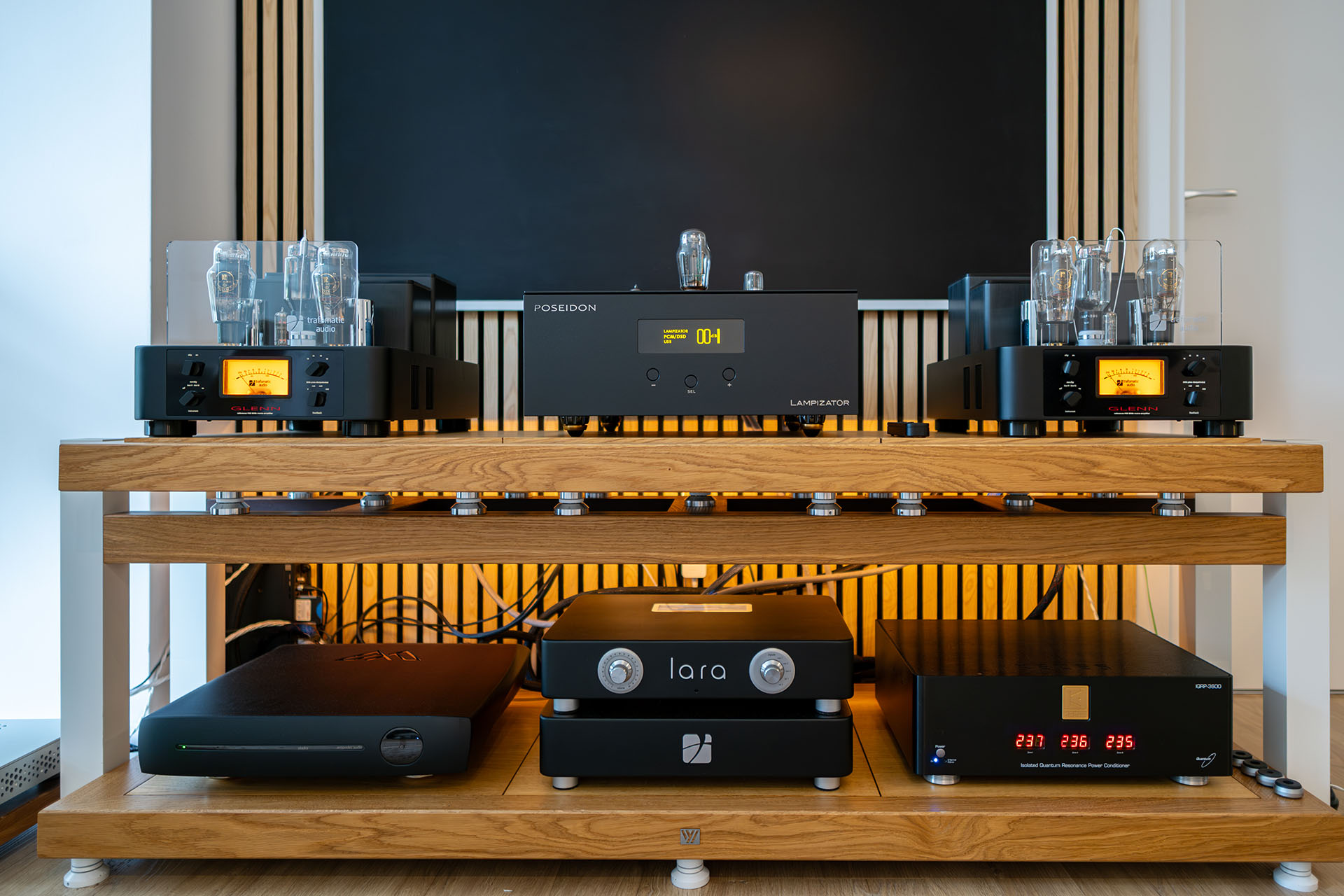
For the sake of God… how does it sound?
Are we finally here?
I hope you won’t feel disappointed, but this will not be a standard reduction to treble, midrange, and bass, with some transients on top. It cannot be. This is a different league, and discussions about sound fundamentals will be mundane and pointless. A DAC of this caliber definitely checks all the boxes with flying colors. There is much more to be achieved here. A greater finesse of character, a purpose, and high-class achievements are more appropriate to describe the true character of Poseidon.
This is a DAC with a soul!
Yes, it is. It extends far beyond any measurements and R2R versus chip-based doctrines. There is a humane character ingrained into the metal and glass; it is alive, it breathes, it gets warm, and it shines. Everything about the music reproduction screams of a soul animating the components inside, glowing with vivacity, character, and beauty. Poseidon obliterates any preconceptions about musical reproduction; it reveals a mental character, a unique personality so present and alive that it can be spooky at times. The presence, intimacy, perfection of imperfection, and total non-mechanical way of playing everything is incomprehensible. It is not fair to compare Poseidon with any other soulless machine, at any price point, as it will be unfair today to compare a kitchen robot with a master Chef.
It is not just incredibly engaging and alive; it adapts and feels deep down inside the music that is playing. It is not about bass or details; it is about the purpose of musical creation, a statement of human creativity that can never be contained in a mathematical approximation of what comes next. Every other machine is just that—a machine. Sooner or later, you will sense the mechanical character and understand the pattern that drives it. You cannot do that with Poseidon. It changes and adapts, playing with character with incredible force or whispering with outstanding intimacy. It shows incredible colors and, at the same time, perfect precision without being cold or sterile, not for a fraction of a second.
This spooky character, this freedom taken for granted, this mastery of the finest nuances, and fantastic bloom without any dynamically constrained effort, is so direct and obvious that you understand immediately the uniqueness and unreproducible performance of Poseidon. I heard ballsy DACs in comparison, stronger and with a louder voice, airier, or all about details, larger even, all the time, facking an effortless personality, pretty good, but all of them, without exceptions, had a voice and only one, in the end. The mechanical machine behind it could fake it pretty well, but sooner or later, there was the same structure, the same voice, and once you heard it, there was no way of going back. This is what makes LampizatOr unique. I have never listened to the mechanical voice behind and never seen a pattern. That is why I will not compare LampizatOr with anything; there is no way to compare it. I will describe its ability to change and adapt, to interpret and mimic, to be alive above all. I will look into its soul and admire it.
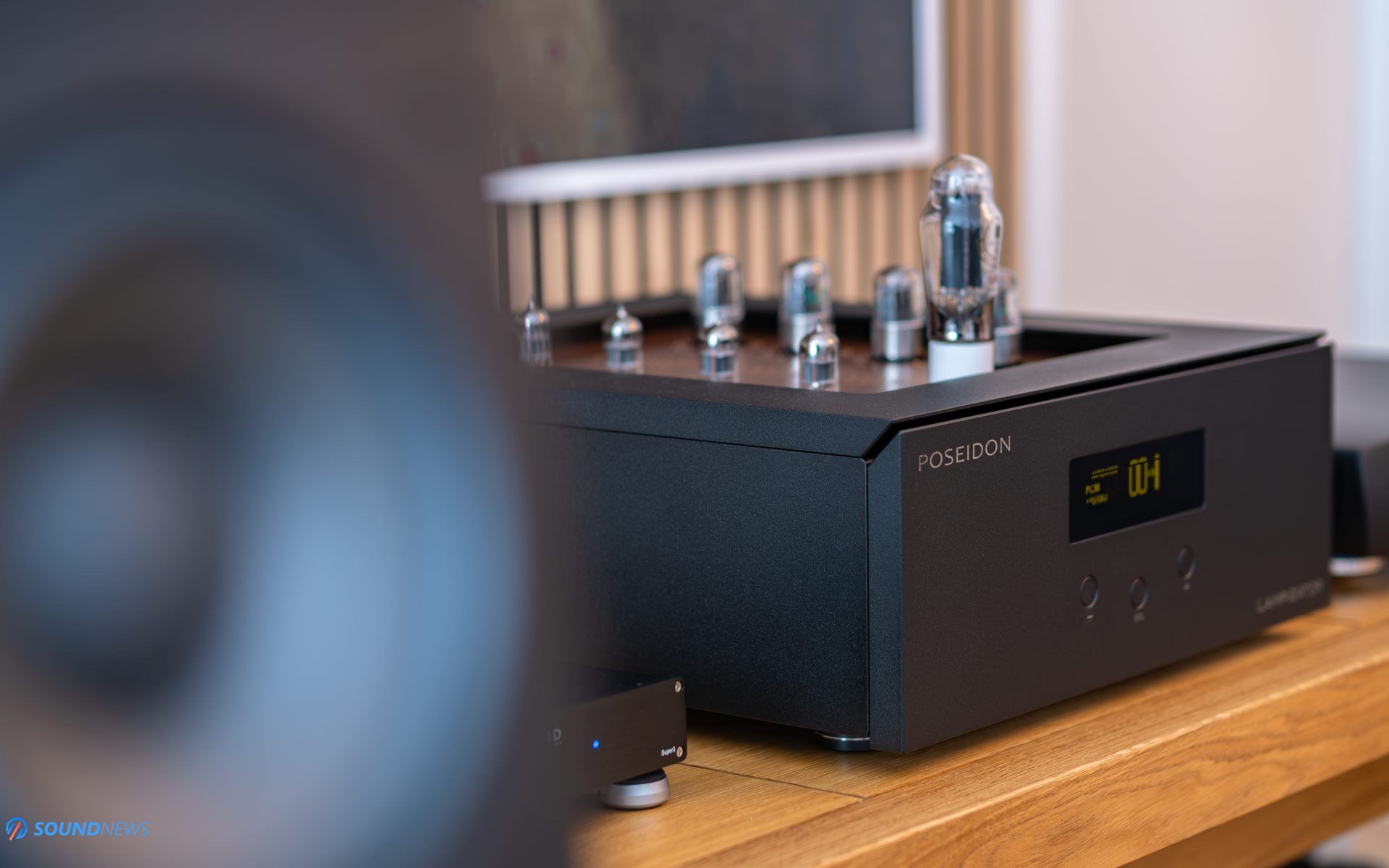
True effortless dynamics.
Being dynamic does not mean to hit hard every freakin’ time. Being dynamic means having infinite power reserves that allow for an incomprehensible discharge when needed, the power to surprise, and to choose the decisive moment. Hammering the bass all the time is a lame mechanical character that overblows the effort and overthrows the purpose. The ability to be subtle, the finesse to remain intimate, and the intelligence to show force when required is the true effortless character in a non-mechanical way.
Poseidon demonstrates incredible and unexpected force when needed, maintaining a pure, subtle, and musical voice at all times. Not all drums sound the same, and not all drums are struck with constant force. The whisper of the wooden stick just before hitting the drum or the sense of the foot preparing to attack the hardest are equally important. There is a before and after every event, and the capacity to reproduce that is sometimes equally or even more important than the brute force of the event itself.
LampizatOr knows how to adapt the voice to be mighty, gargantuan even, with precision, striking dynamic contrast, and directness without being offensive or rude. Pure force needs to be quantified intelligently. Exaggerated micro contrast, endless showing of every dust particle, or rough textural definition are not achievements. But there is excellence in moderation and flow. A perfect dark background can show more details than a bright, dull light. The contrast is just the difference between the darkest and brightest parts of a scene, and trying to compensate by blinding it with rough power is not an act of refinement or style.
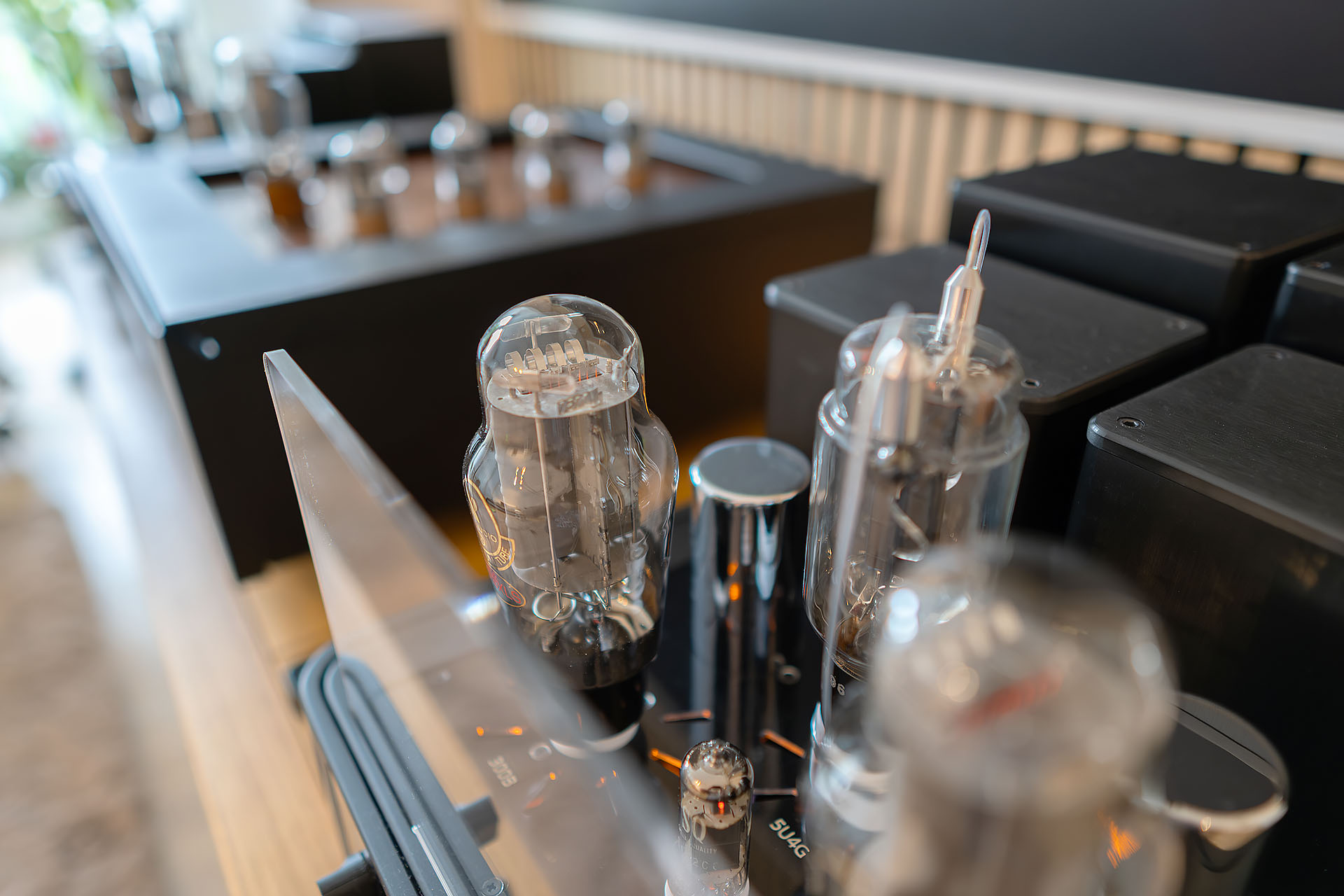
Radiance, vividness, and density.
Poseidon is the first and only DAC I have heard that does not have any missteps in the midrange. Its perfect tonality and almost human-character portrayals of voices are unlike anything else. There is a great deal of density and natural warmth. The texture is perfectly reproduced without any exaggeration or roughness. The tubes undoubtedly play a significant role in this; almost nothing can match the vividness and palpability of this old tech. I heard DACs with magically palpable finesse, which presented a gigantic deep in the midrange. There was no meat or density there. Being able to show voices as they are, and not only the texture described solely by microdetails, is a rare treat.
And then there is presence, the force of the most organic nature. The voices are alive, luminous, emotional, in full bloom, and colorful. There is no trace of sibilance, never. Many DACs follow the perfect tuning, losing completely the emotional and brilliant character of the human voices, transforming them into a mechanical and stringent manifestation of pure technicalities. When you hear the density and warmth of Poseidon, there is no way to go back.
The rich, colorful character described here has nothing to do with the coloration of sound. There is just pure expressiveness, proper mass added to the instruments, glittering brilliance in the treble, naturalness of metallic tones, insane attack of percussion, with a protective roundness so as never to be harsh. There is articulation and control in a lively manner, decay, and an easiness grounded in surroundings. Everything is more alive, substantial, expansive, dynamic, and extended.
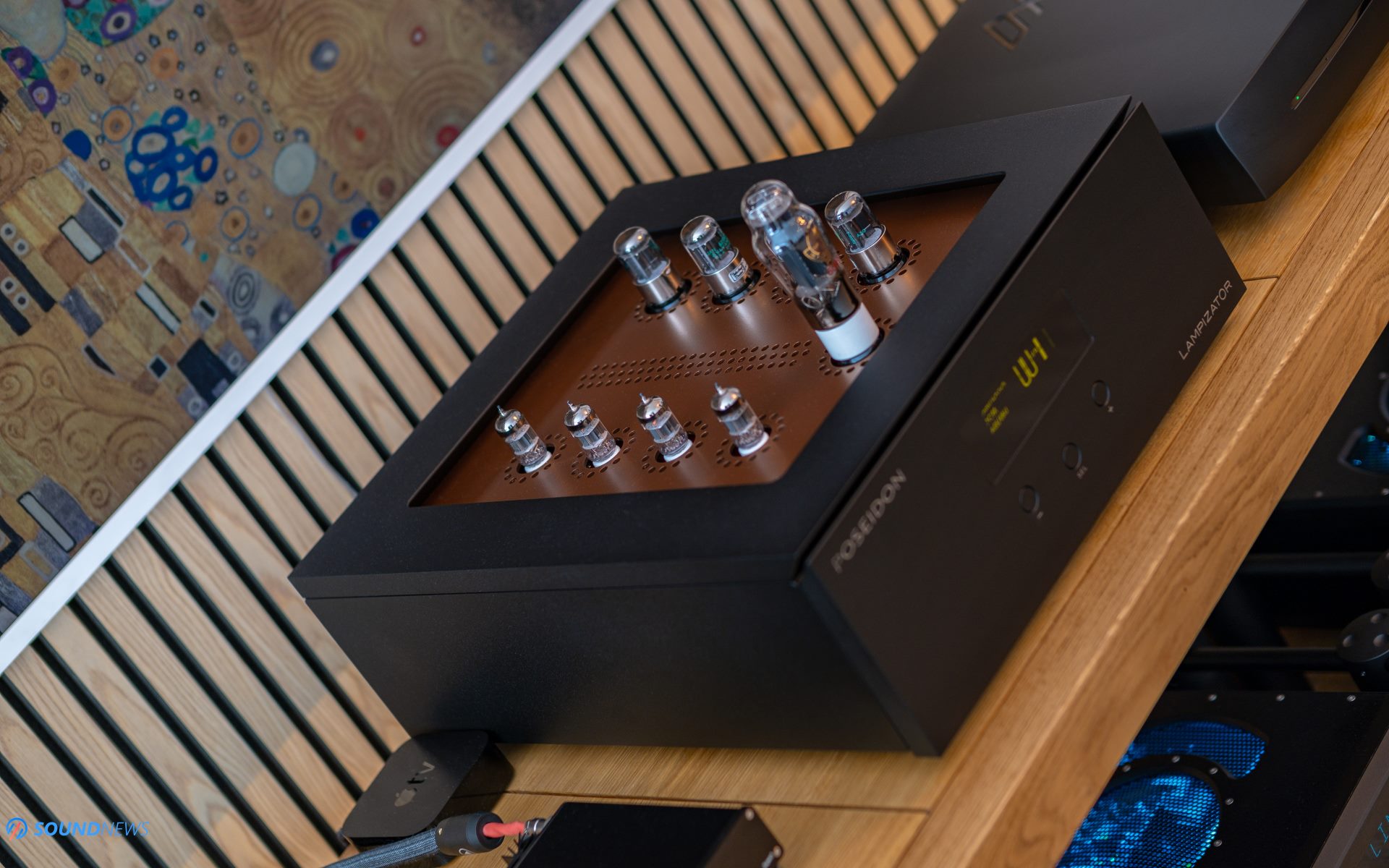
Luminance and spaciousness.
A key character attribute is what I refer to as “luminance” (similar to what might be called “bloom,” although it blends aspects of bloom, dynamics, and pitch). Throughout life, instruments alter in size, perspective, and presence due to variations in dynamics and register, along with the projection changes caused by dynamics and pitch. For instance, a trumpet playing softly in the background can suddenly take on prominence when it adopts a powerful line, played with increased intensity or in a higher register. Such shifts in presence are frequently experienced at live concerts; yet, these changes are rarely captured authentically, which tends to confine instrumental images to solitary planes rather than reflecting the fluidity of foreground, midground, and background found in real life.
With Poseidon, each instrument plays in its luminous bubble, which not only shifts position in the soundstage but also expands or contracts, coming closer or moving further away. All these changes are entirely natural and not always interconnected. A louder instrument is not necessarily closer or larger; it is simply more luminous and brighter. This embodies the pure organic character of Poseidon, something I have never heard before. This quality makes the soundstage infinitely deep, transcending the mechanical nature of the digital converter and rendering everything more real and palpable. As a result, Poseidon possesses an infinite number of voices and nearly a human-like, soulful personality.
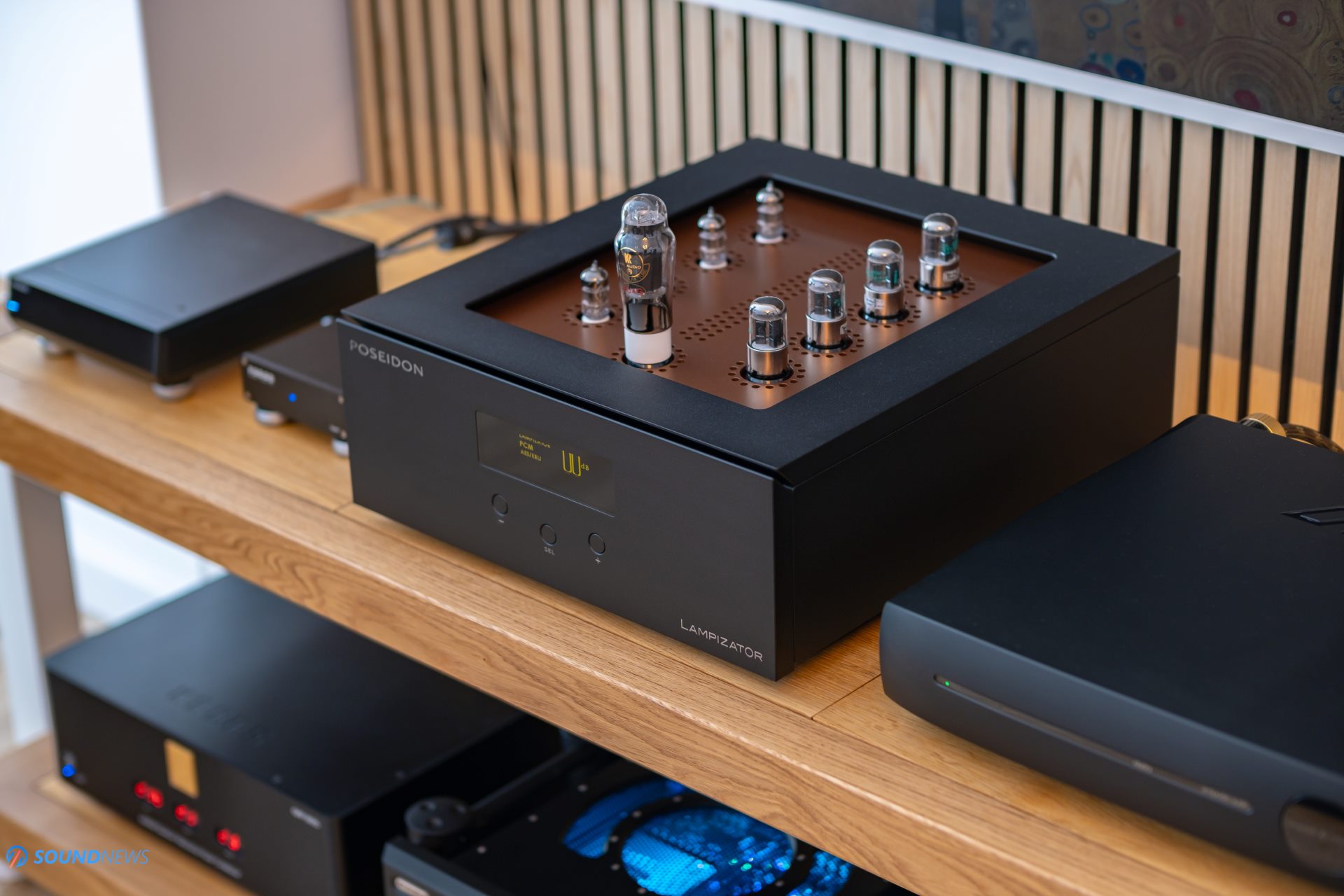
Poseidon’s linestage preamplifier
So, on top of everything, Poseidon delivers a very good preamplifier. Łukasz described Poseidon as a Swiss army knife. I don’t think that I like this comparison. It might be true from a feature-proof perspective or marketing impact, but I always prefer highly dedicated hardware that is polished to perfection, focusing on one purpose and excelling in it. That’s why I like to think about the Poseidon DAC and the Poseidon line preamplifier as two separate entities bound by faith to share the same body and existence.
But what is really cool is that the preamp is truly a separate entity and can be used solely for what it is – a damn good preamplifier. Regardless of the price point of other preamplifiers? That, I do not know. The only preamp that I can genuinely compare it to in my current configuration is Trafomatic Lara. And yes, somehow Poseidon on its own manages to be a smidge more detailed, with a ferocious clarity, and presents the soundstage in a deeper, but not wider way. Lara brings an extra warmth and bloom, more sweetness to the midrange, and it is a bit spicier.
Poseidon is more grounded in the midrange, muscular, and appears more developed and secure. It adds some extra weight without becoming bulky. Thus, it serves as a terrific preamplifier with a slightly darker tone, as the voice sounds more mature. The differences depicted here are indeed exaggerated for the sake of storytelling. Likely, the tight integration between the DAC and the preamp contributes to the impeccable clarity and a more sophisticated presentation. Every element influences a system’s sound, and, of course, the cables used to connect another preamp will also have an impact. That is why sometimes even apples can be red, green, or something in between, making a direct comparison very challenging to achieve.
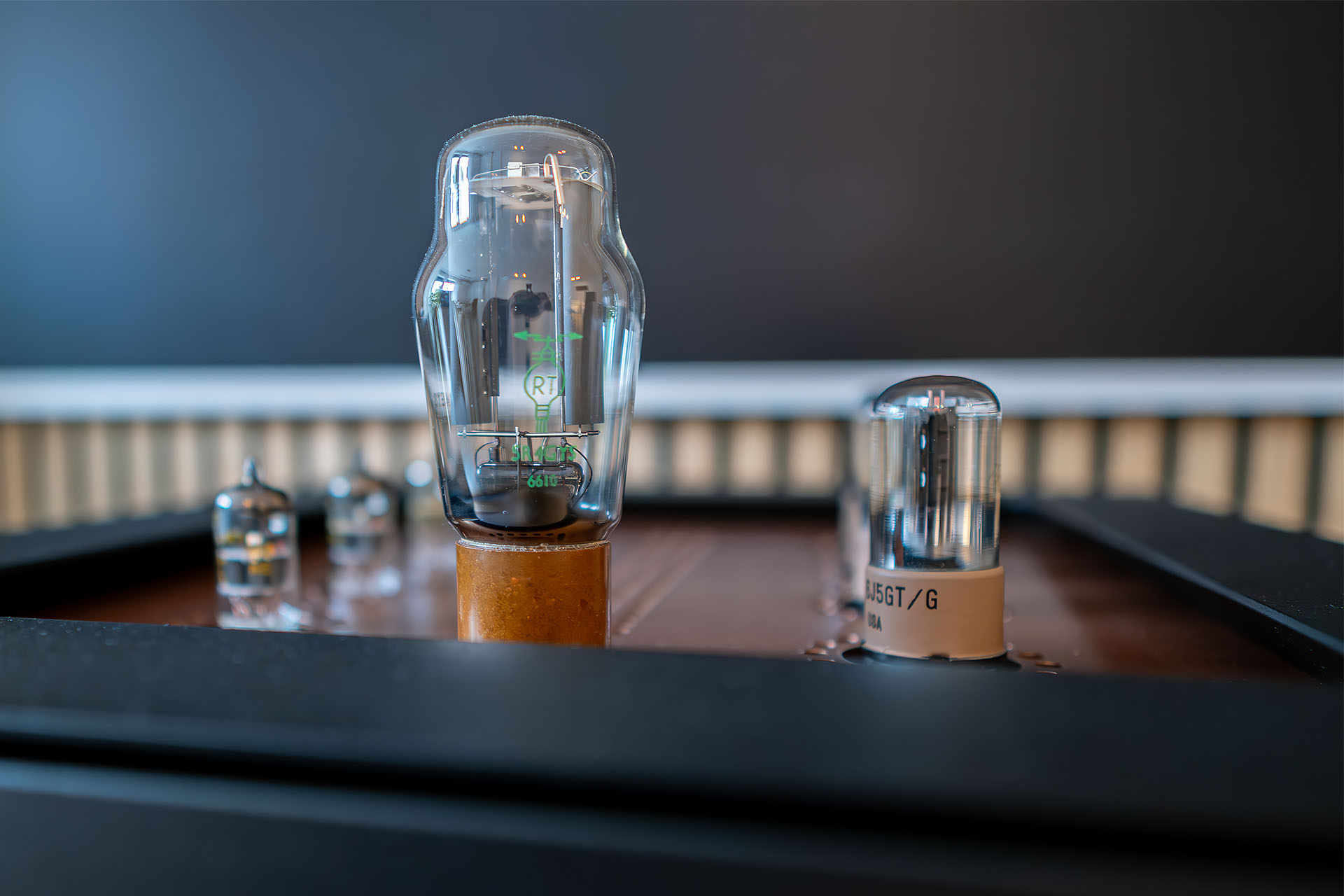
— Ten —
Tube Rolling Paradise.
My first thought was to drag you all into the rabbit hole with me. And then I realised my mistake. I was going back to the original configuration provided by Łukasz, and I understood how wrong I was. It is very clear now that the LampizatOr team did their homework like no one else. I understood, to the extent of my pocket, that they listened a lot, and it is challenging and costly to beat the standard configuration from a purely technical perspective. They carefully chose the 6N1P as the input tube, the 6C2C (6J5) for the output, and a suitable rectifier, the 5C3S (5U4G). So, I will not drag you all through all the tubes I tried, as it is pointless. I will try to advise if there is a real upgrade for each category. Poseidon can be a tube-rolling paradise, but frankly, there is little need for it, with just a few notable exceptions.

The rectifier.
This is a very impactful part as the power source of Poseidon is tube rectified. The changes are immediate, and maybe the only tube I will try to upgrade, if I’m conscious enough. The list of accepted rectifiers contains: 5U4G rectifier or equivalent, 274B, 5Y3, 5C3S, GZ34, GZ37, GZ480, 5AR4WGB.
Unless you have access to a dream like Western Electric 422A or 274B, which I can not afford, being in the thousands of coins now, the best tube that I could find was a pristine 5R4GYS RT (La Radio Technique Philips). Made in 1962 in France, it is the closest approximation to the legendary Western Electric 422A rectifiers, in terms of sound quality, not the unique construction of the WE 422A. Produced for military purposes and therefore of unquestionable structural quality and, of course, performance, the RT 5R4GYS has perfect tonality, extraordinary extension and detail, with a kick like no other I could find. In this category, the legendary RCA 5R4GY from 44-45 also keeps a special place of its own. As for the new contenders in production today, KR Audio 5U4G stands as a safe and sound option. KR Audio is a highly regarded tube manufacturer, and I can attest to the quality and excellent sound.
Let’s keep it sane 🙂
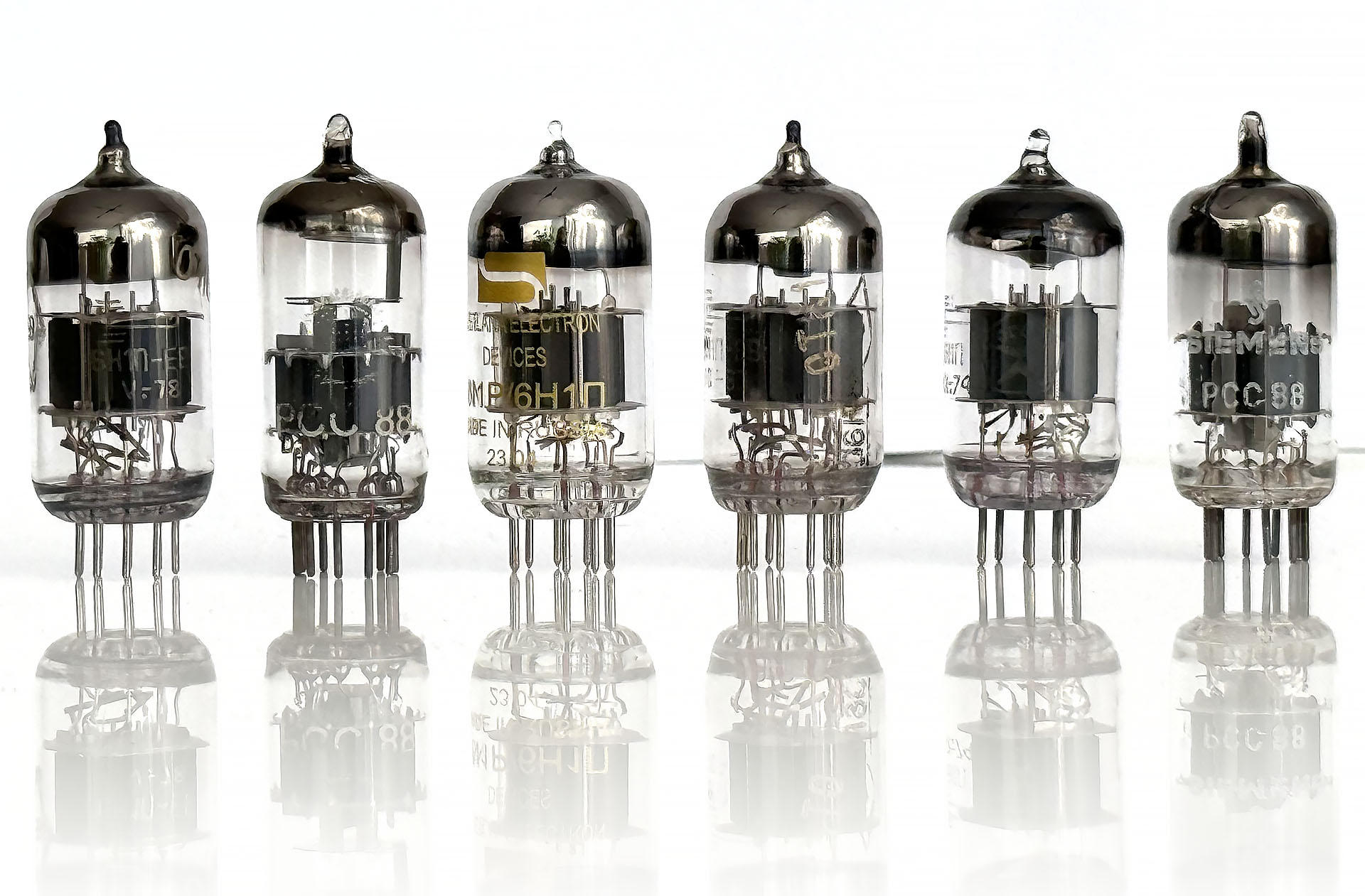
The input tubes – noval.
The impact of the input tubes is somewhat smaller in the grand scheme of things. Again, if I am lucid enough, I would not bother upgrading to something else. There are four tubes, and they must be perfectly matched to achieve a solid and accurate soundstage. The list of families accepted officially by LampizatOr is: 6N1P dual triode as input buffer or 6N6P, 6N30P, ECC88, E88CC, PCC88, 6DJ9, 6922. There are a few other options, but they require an adapter, and I would not advise you to do that. Any extra connection can add something to the sound, so it is enough to swap a few choices, but dealing with the adapters and another sound change induced by it is too much.
I explored numerous options because they are beautiful and highly entertaining. While I wouldn’t recommend following my path entirely, I aim to share my best discoveries. One of the standout choices for openness, detail, and impactful performance is the Valvo 7DJ8/PC88, 61-62, produced in Hamburg, Germany. It excels in all aspects if you can find a matched quad.
One high-end option could be 6N23P-EV / 6H23P-EB NOS/Russia, equivalent to the European ECC88 / E88CC tube, and can be used in any 6922, 6DJ8, or ECC88 circuit. Some early versions from the Soviet Era can be absolutely spectacular. Unfortunately, the production quality varied wildly, and it is not easy to find a perfectly matched quad of the highest quality. If you do find it, you will be rewarded with a muscular and highly detailed presentation, not so open as Valvo but smooth and coherent.
The last option I want to share is the one I’ve settled on for now. I do not know why I walked on such strange roads when the straightforward upgrade was right in front of me… The Tesla E88CC is as good as it gets. Gold pin versions add better conductivity over the long term, and the more exotic Gold Grid versions go even further for sound quality. It shines with perfect linearity, resulting in a very good soundstage and excellent layering. I wish I could get it sooner because I found it mentally relaxing and with a perfect tonality and openness, even if it does not have the thunderous bass of Valvo.
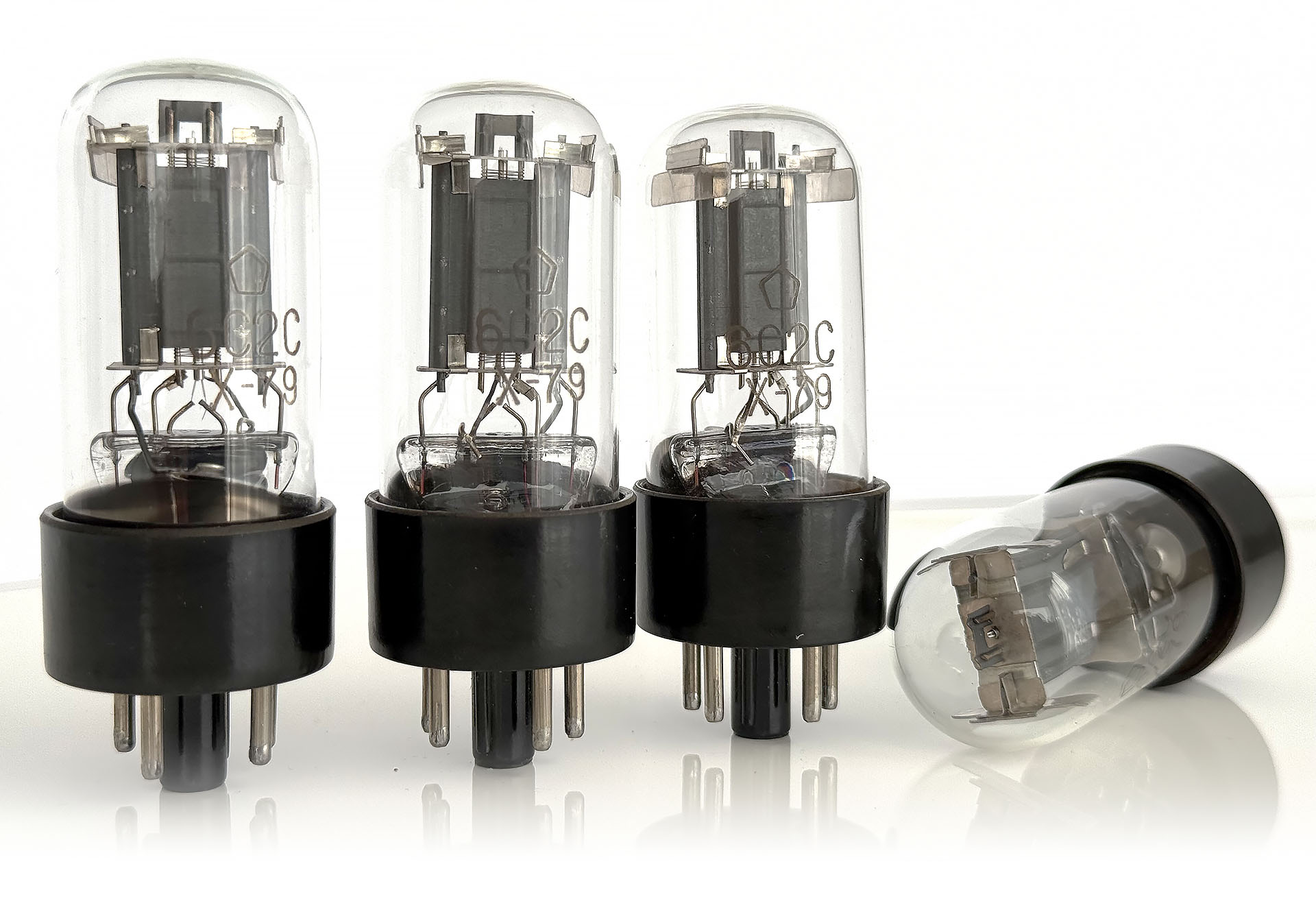
The output tubes. What a madness…
And here I was, kicked in the balls pretty hard. Two times, actually.
First, the 6C2C (6J5) delivered with your Poseidon is tremendously good. A cheap tube (only $ 17) from the Soviet Era, which can still be found in large quantities here and there, manages to obliterate 99% of very costly alternatives. From the Fivre 6V6 to the Raytheon 6J5 and even the adapter-mounted Sylvania 6888, nothing was as dynamic, detailed, or precise as this inexpensive tube. It was the time when I realised that Łukasz had tested the alternatives extremely well and settled on this not just from a price and availability perspective, but also from the sound quality in the first place. It was a painful discovery. Whatever I tried until up to a point, I could not succeed in overthrowing the excellent precision and perfect sound stage of 6C2C. Every time I returned to the original tubes, it was like a discovery. So it’s as good as it gets!
With one exception! Another kick in the soft area, but this time I had my turn to respond. By an incredible chance, I got a good quad of KEN RAD 6J5GT/G, and to my surprise, I stepped into a different world. The dynamics offered by these are just extraordinary. And all of that comes with excellent transparency and precise details. These are the only upgrades I can recommend based on what I’ve listened to over the stock version. For everything else… do not bother! This is what I use now, and I will settle for a while. At least I had my small part of revenge and reward.
— Eleven —
Conclusions.
After all that, we are finally at the end of this story. I will not provide a brief summary of what I have already said. If I had done something good here, maybe I would not spoil it in the end. If not, please have some understanding, as I often speak from my heart rather than my head.
One thing is left to be said and done.
LampizatOr Poseidon is a truly groundbreaking product that has disrupted all my preconceptions, bringing immense joy to my life and a genuine sense of confidence. For that, and its extraordinary sound character and perfection in almost everything, I have to award it our “Editors’ Choice Award”! It is our most esteemed award, and I am sorry that we do not have something more elevated than this. Some very rare products create thunderous waves of incredible magnitude.
In the end, I am only curious about the new cost-no-object Horizon 360. For me, this is the only possible upgrade path. It might not be, as Poseidon plays such a precise role at the foundation of my system, but I will really want to try it above anything else.
I leave you with all my best wishes. We are already hours away from Munich High-End 2025, and we will continue to report about the craziest, the most glorious, and best sounding, as ever. Let’s hear only of the best!

LampizatOr Poseidon details:
- Weight: 23 kg / 55 lbs net, 35 kg / 80 lbs gross
- Dimensions without tubes: 440 mm W x 550 mm D x 170 mm H (height with tubes 250 mm)
- Digital inputs: 1 x USB, 1 x S/PDIF RCA, 1 x AES/EBU, 1 x TOSLINK
- 1 x analog input RCA, 1 x analog input XLR fully balanced
- Output impedance: 400 Ohms per phase
- Input impedance 100k per phase. 0,2M balanced (as a pre)
- 1 x analog output pair RCA and 1 x XLR balanced output
- Output level: 0DB full level @3V peak sinus 1 kHz per phase, 6V p-p for balanced
- Mains 110-115 – 220 – 230 – 240 V AC / consumption 120 VA (0.45A)
- Frequency response 15Hz-100 kHz @+/- 1,5 dB, >500kHz @ -6dB
- Overall amplification factor: 4x (6dB) – tube dependent
- Maximum possible amplitude output: 11V SE, 22V Balanced
- Volume setting to obtain 2 V output with standard digital source of 0dB: -10points SE, -15 points Bal
- Volume maximum signal output with standard digital source of 0dB: 3V SE, 4,7V Bal
- Input sensitivity @2Vpp output signal and max level setting: 625mV SE, 160 mV Bal
- THD @ 2V output: 0,09% SE, 0,02 % Bal
Price: 23.000 Euro + taxes
https://www.lampizatorpoland.com/
Associated Equipment
- Digital source: Antipodes OLADRA or a custom passive server with Euphony, Roon, JCAT NET XE powered by linear power supply – FARAD Super 10
- Transport: Antipodes OLADRA
- D/A converter (DAC): LampizatOr Poseidon
- Amplifier: CHORD Electronics Ultima 5, Trafomatic Audio Glenn 300B SET monoblocks
- Preamplifier: CHORD Electronics Ultima PRE2, Trafomatic Audio Lara line preamplifier
- Loudspeakers: Raidho TD 1.2, Raidho TD 2.2
- Headphones: Meze Elite
- Headphone amplifier: Trafomatic Primavera
- Speaker Cables: Marohei Statement SE, Crystal Art Series Monet Speak Diamond2
- Interconnects: Marohei Statement SE balanced, Crystal Reference2 Diamond XLR
- Digital Cables: Marohei Statement SE AES/EBU, Crystal Monet USB Diamond2, Network Acoustics Muon2
- Network Cables: Crystal Da Vinci Network Cable
- Power cables: Marohei Statement SE, Crystal Ultra2 Diamond Power, Roboli Charlin
- Power: Keces IQRP-3600
- Network: Melco S100/2 switch powered by FARAD Super 3, Lumin L2 switch/music library
- Racks: Woodyard Suspended Triple, Woodyard Baby Modular
- Anti-vibration accessories: Arya Audio Labs RevOpod, Viablue UFO DOME Cable holders, Viablue UFO Vibration Absorbers






